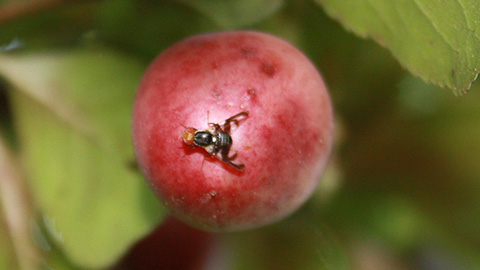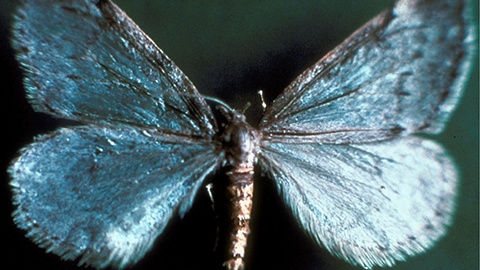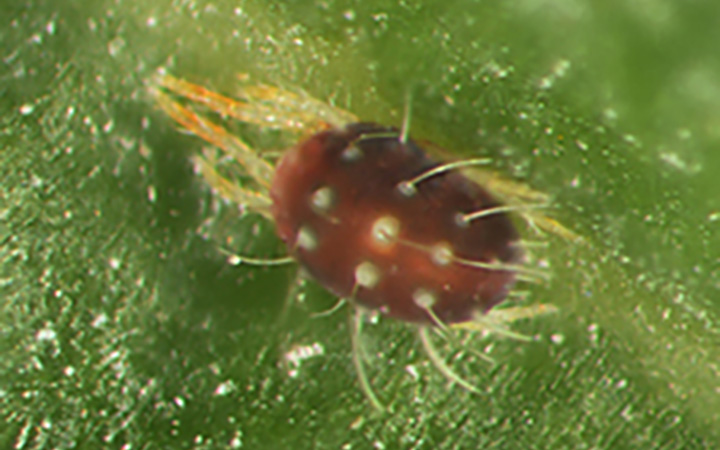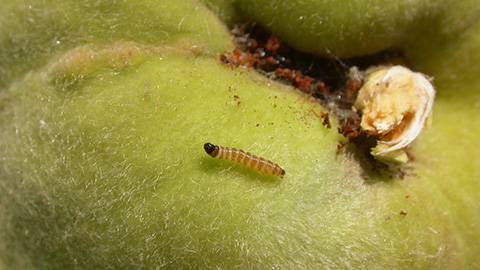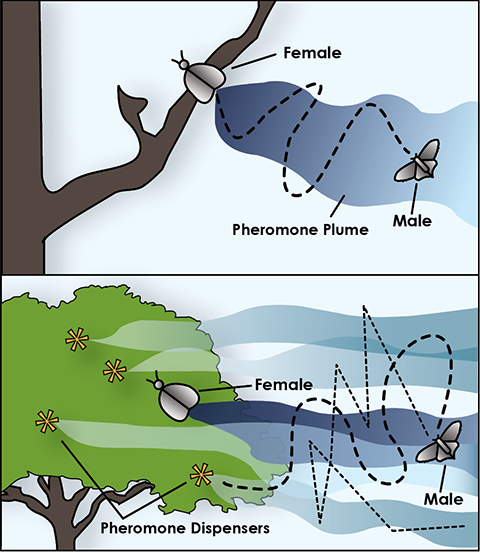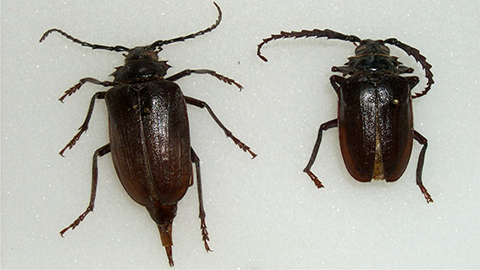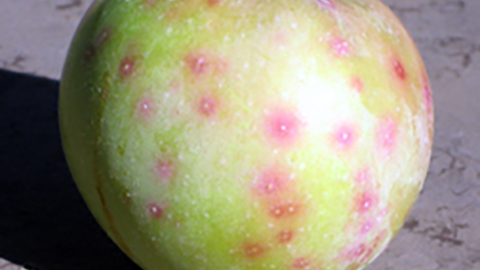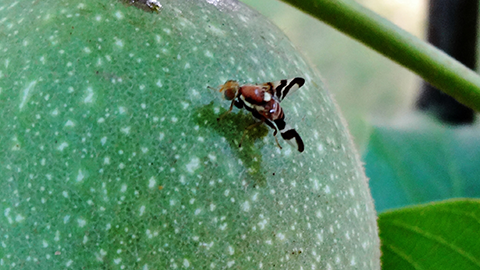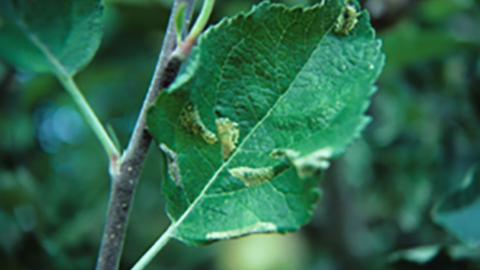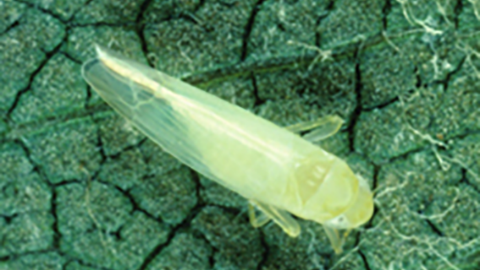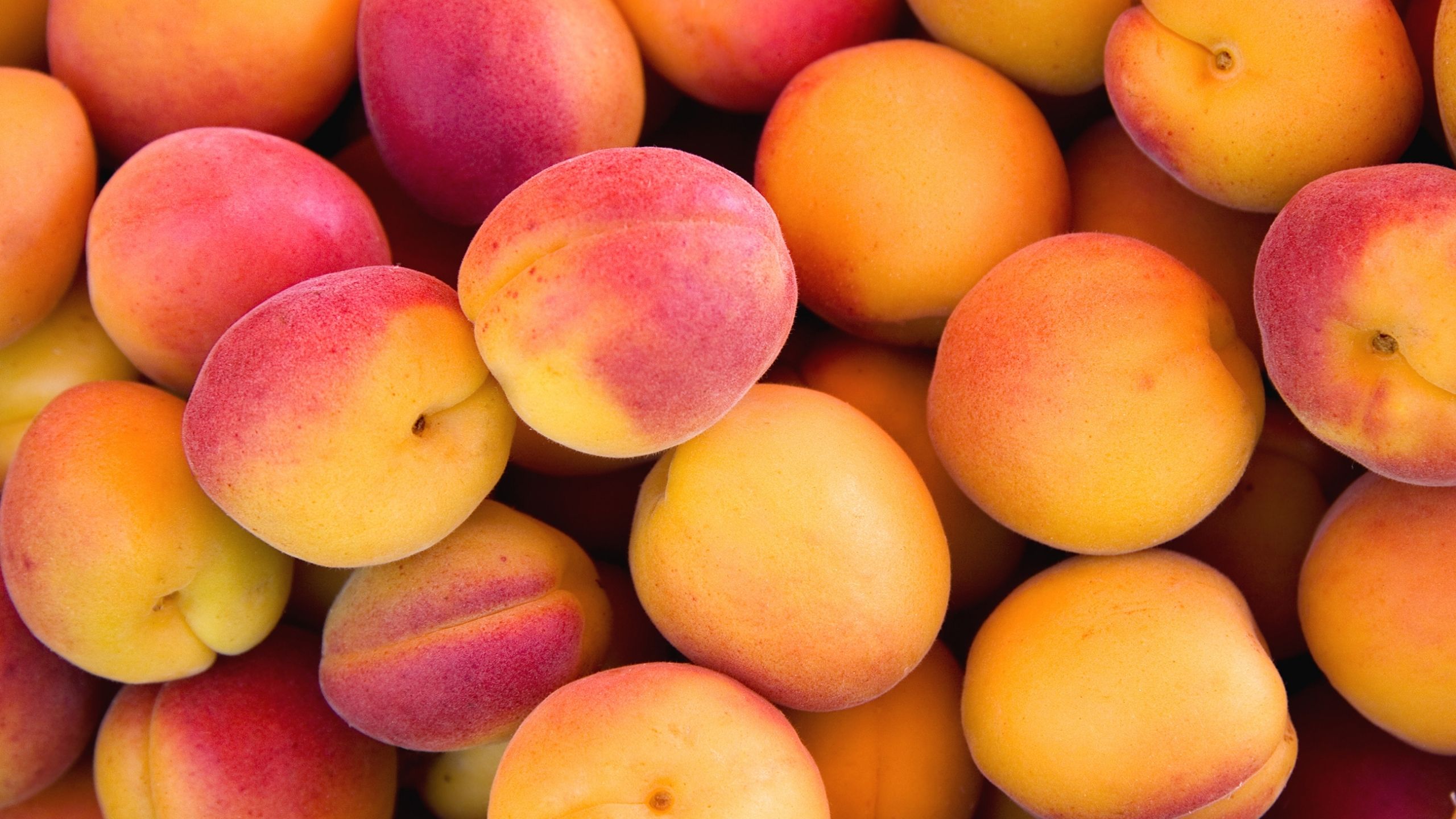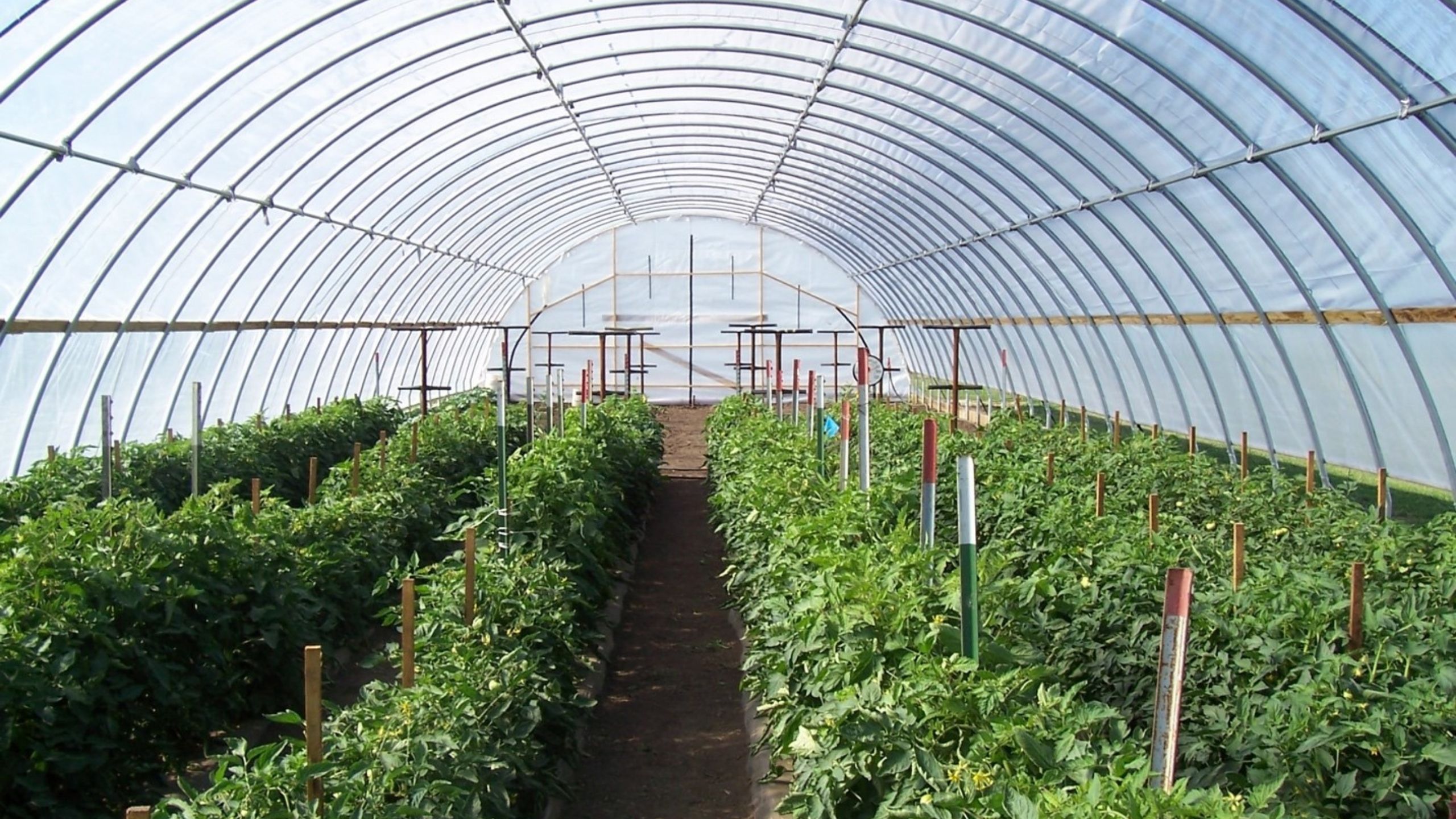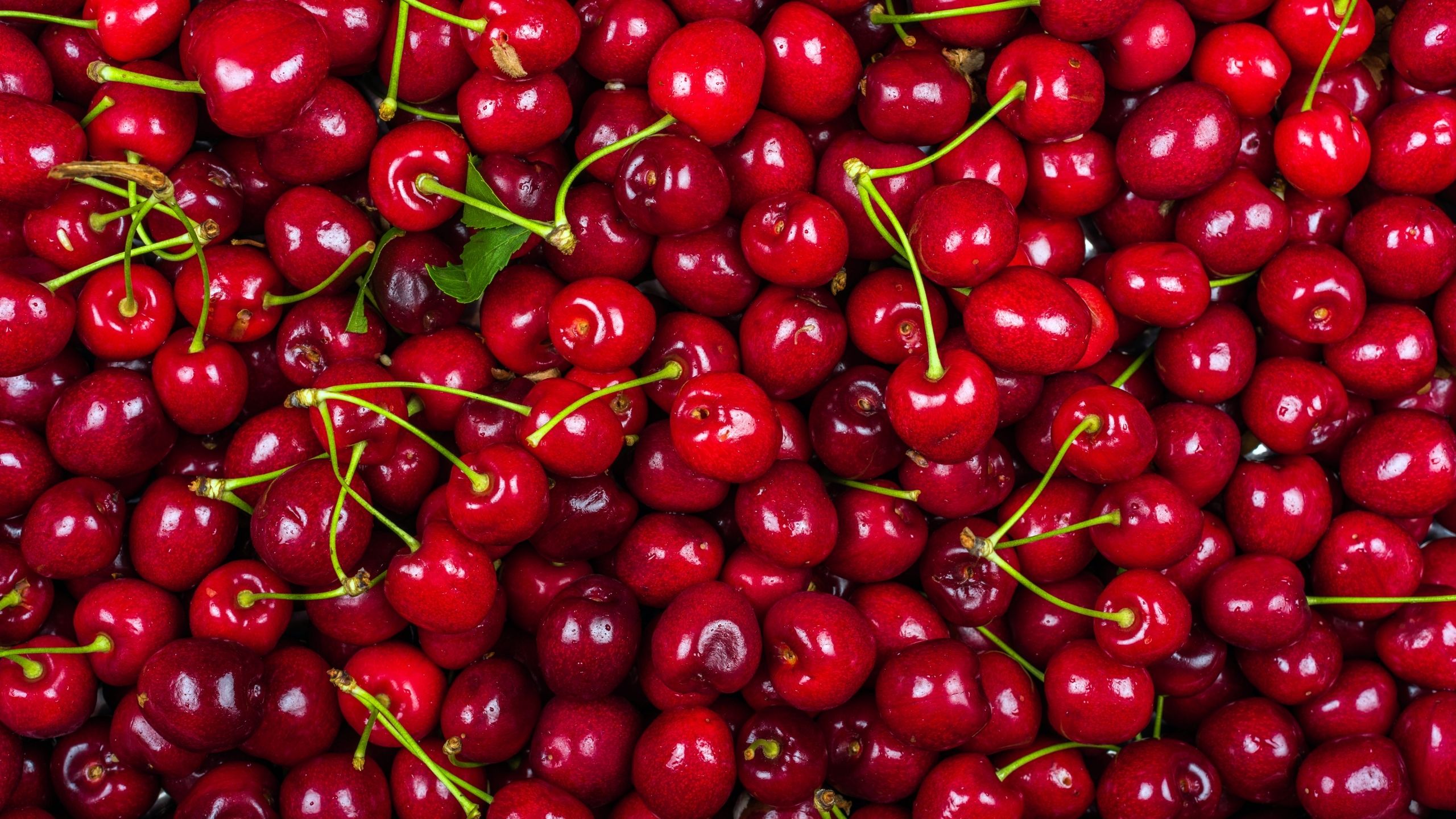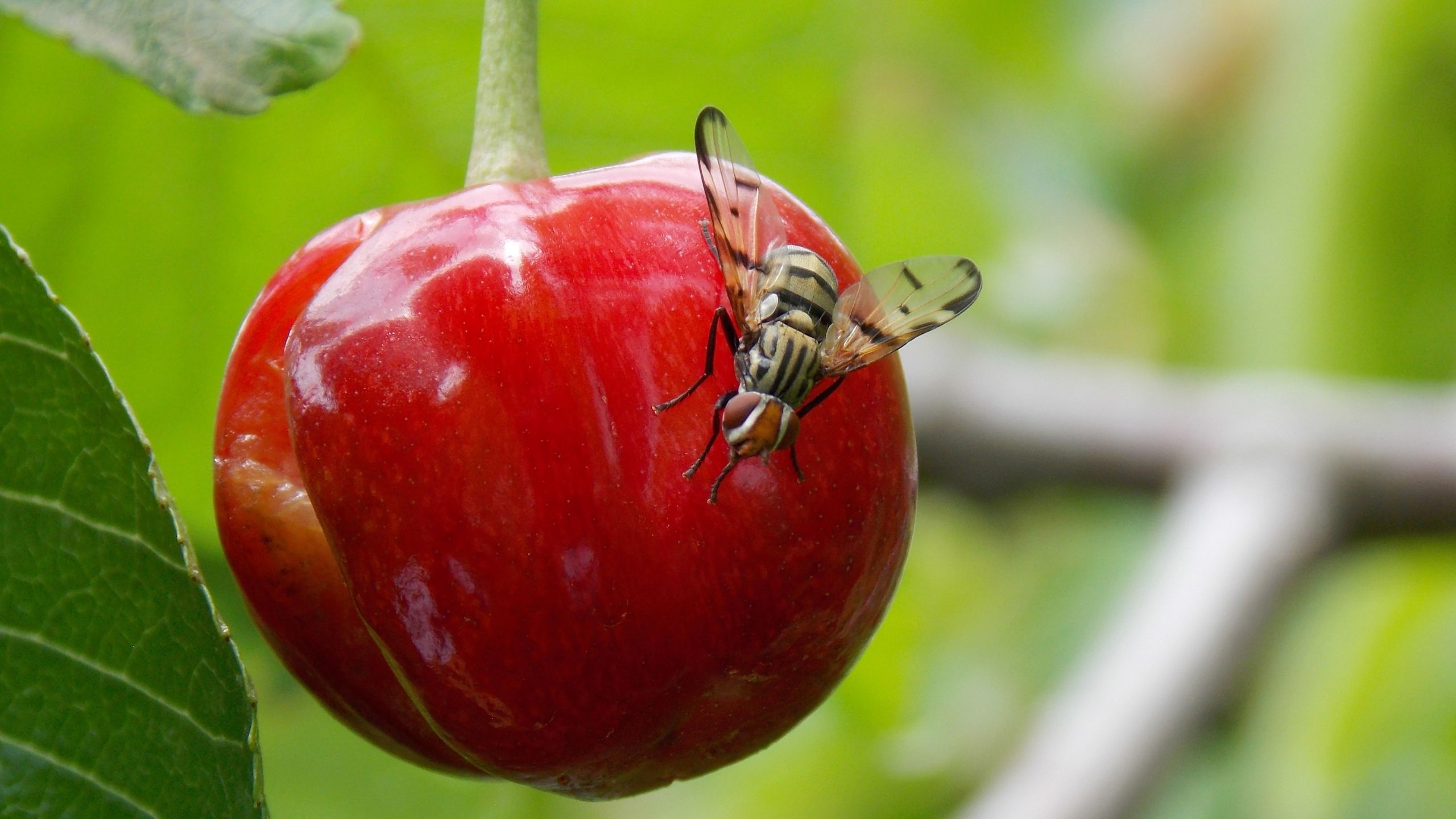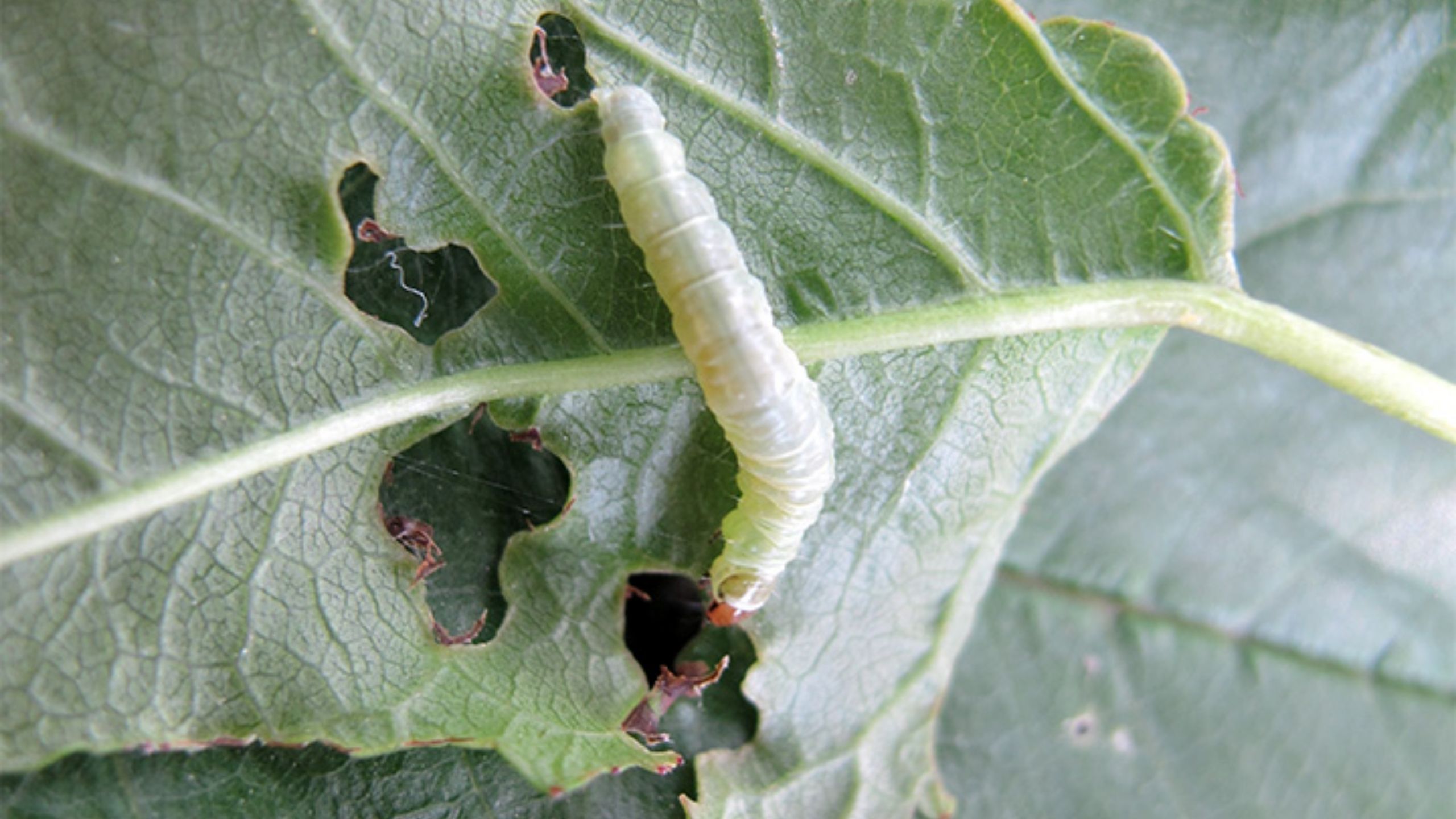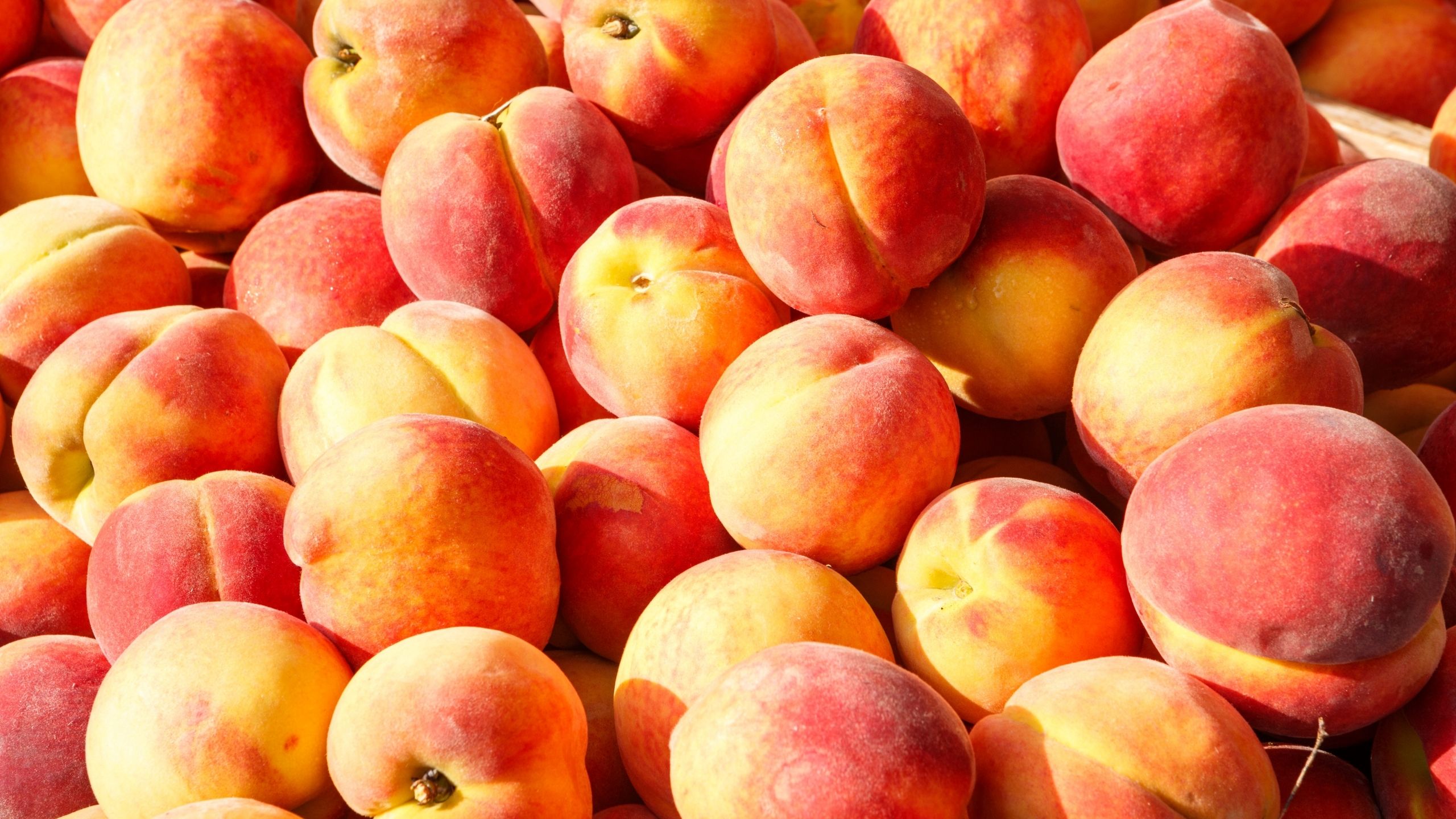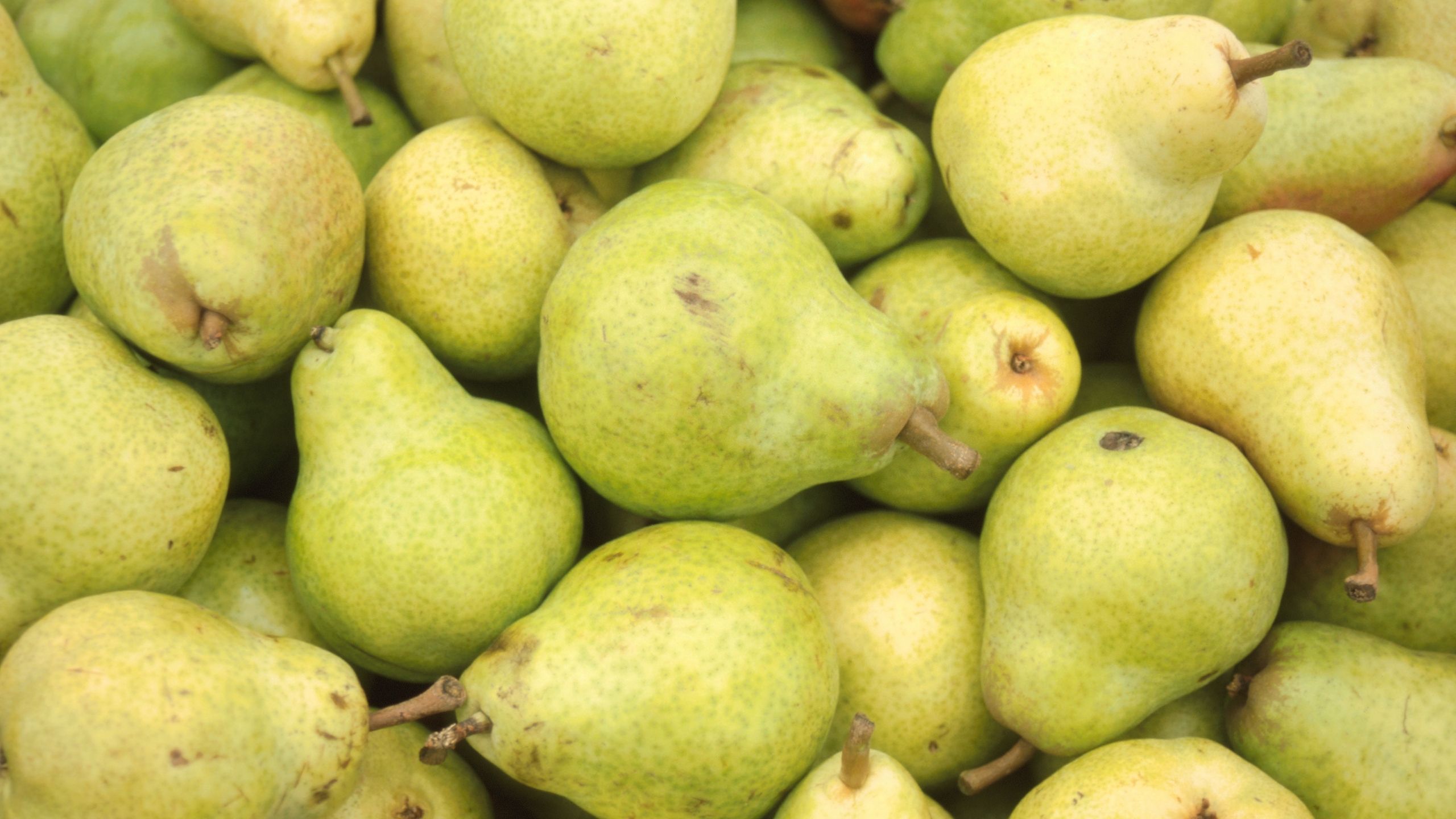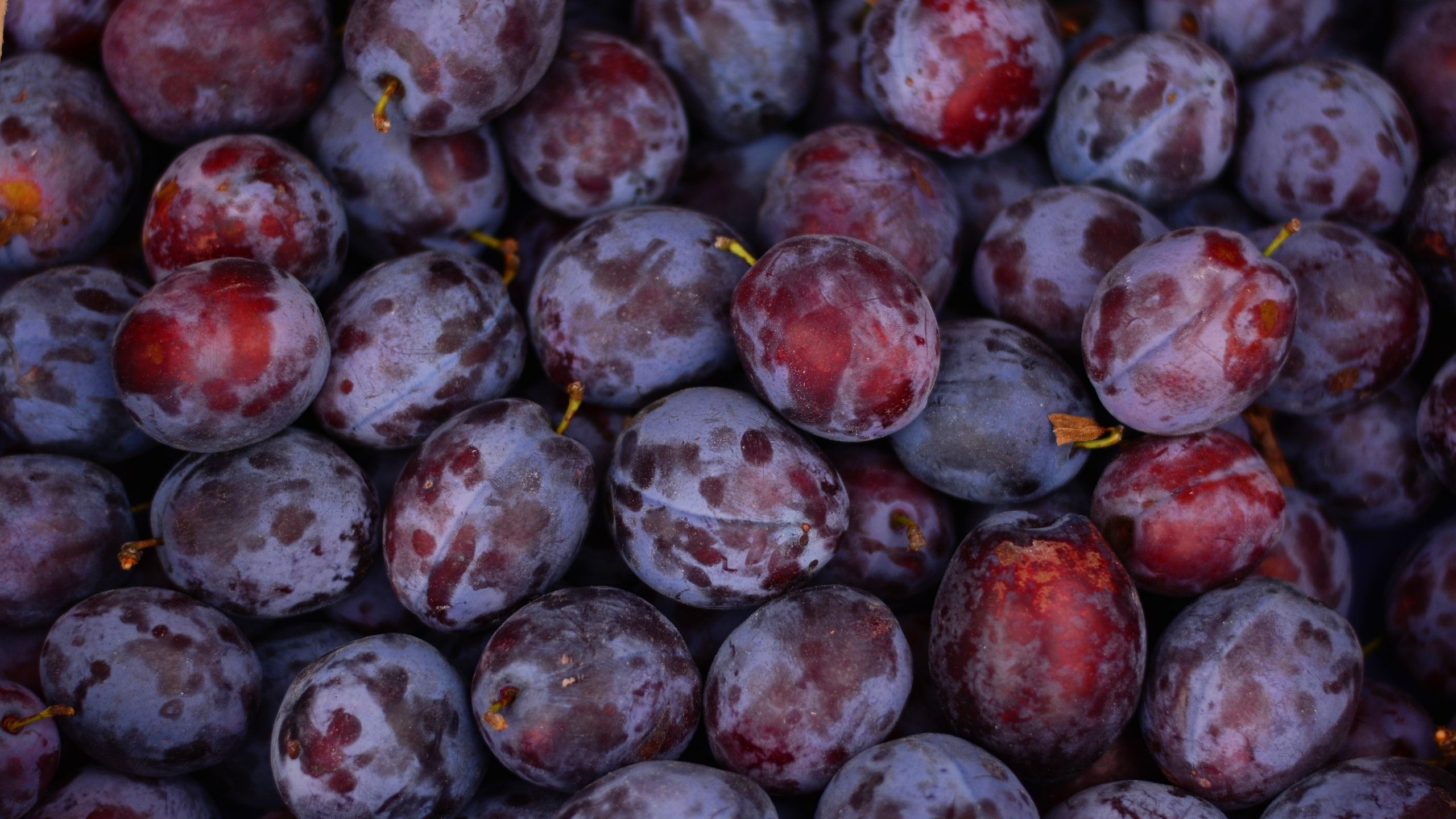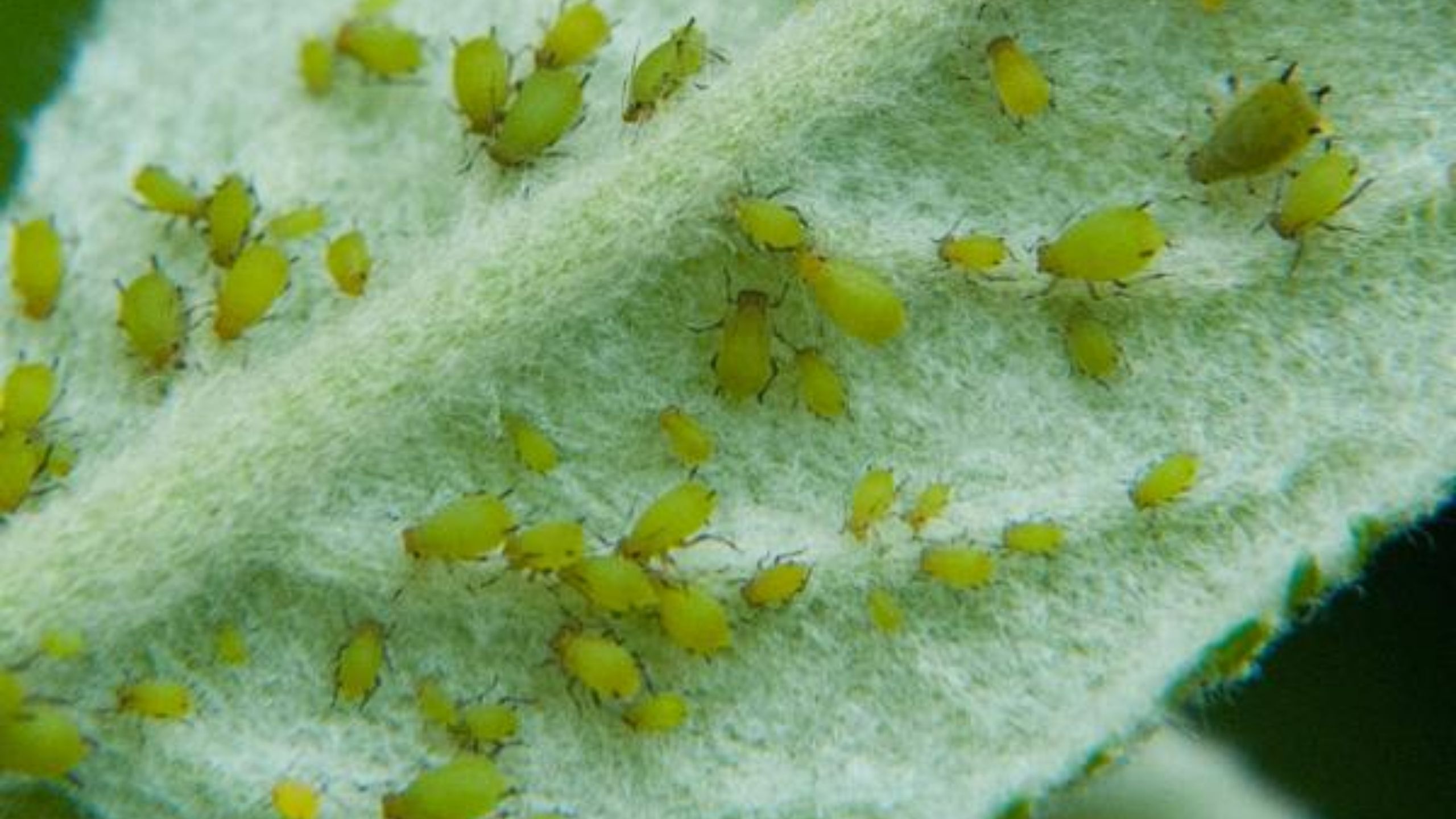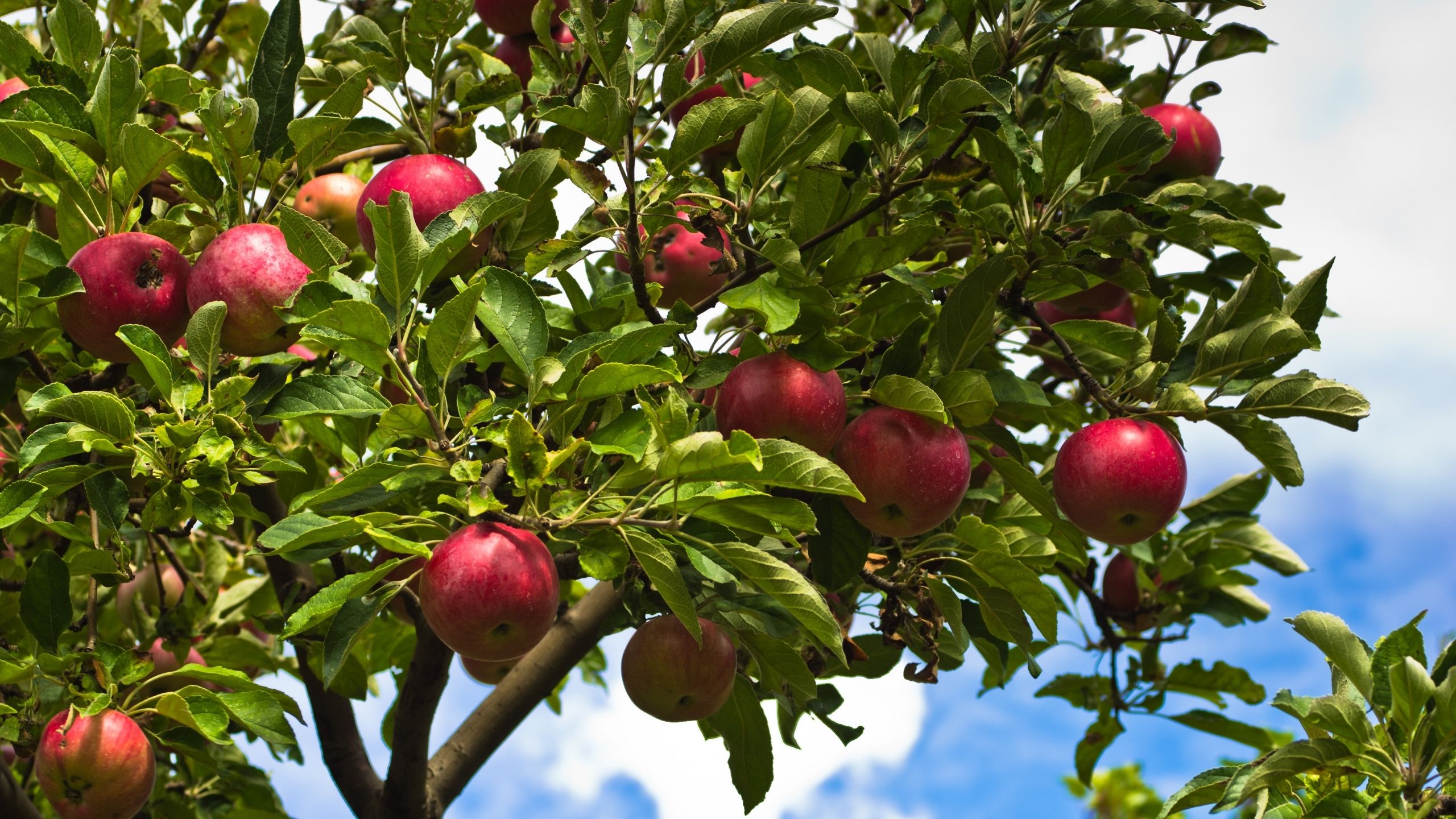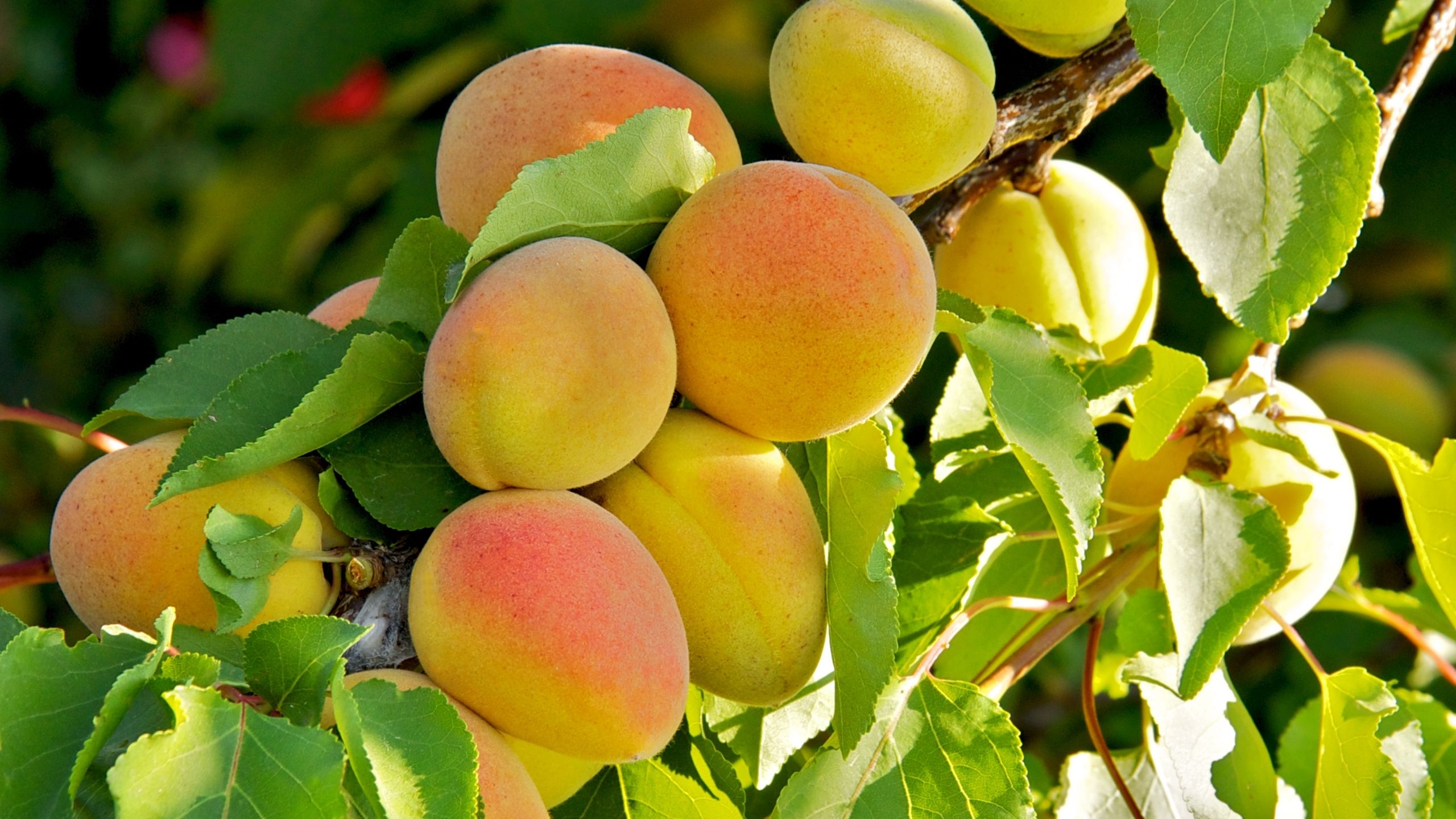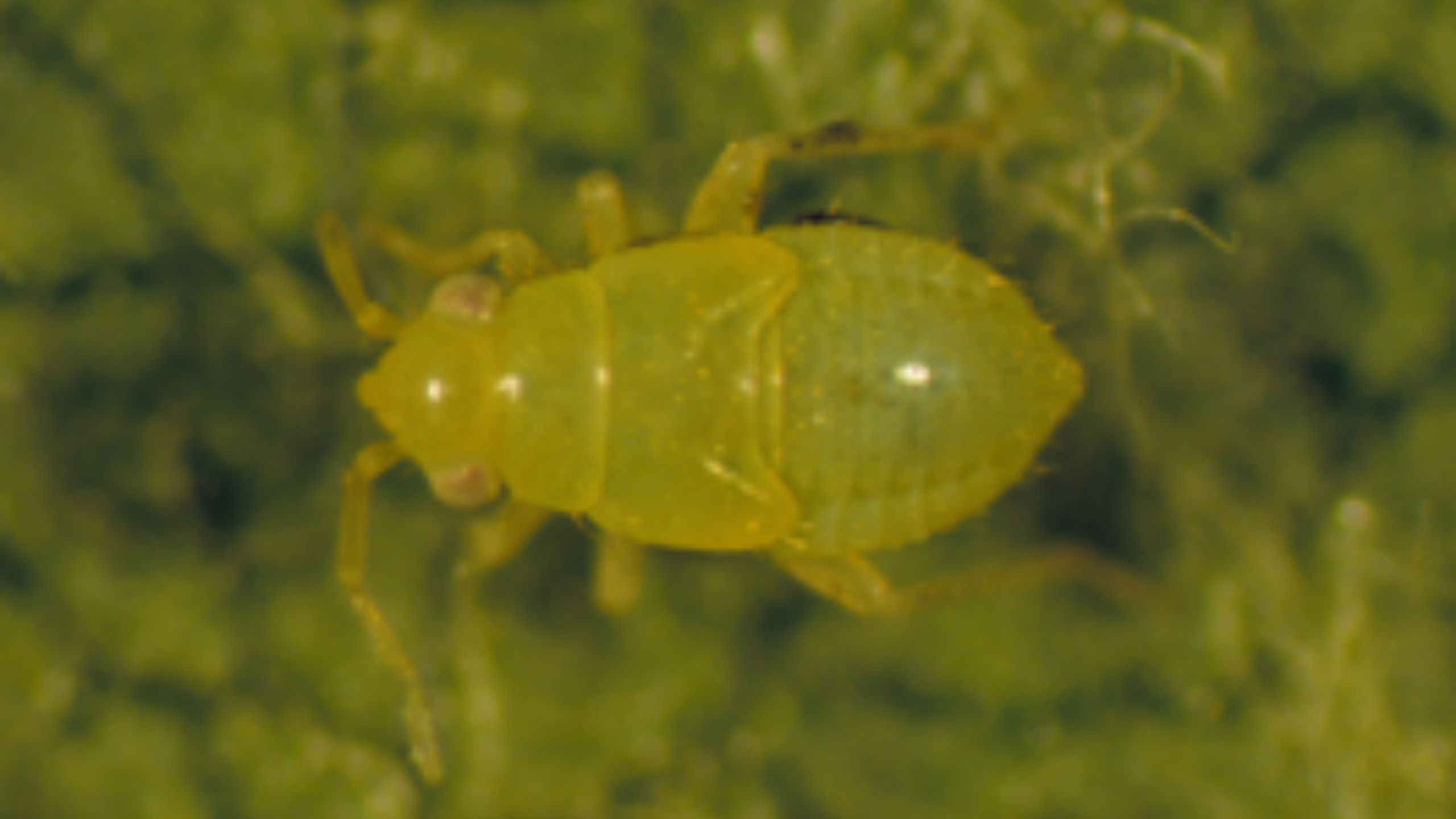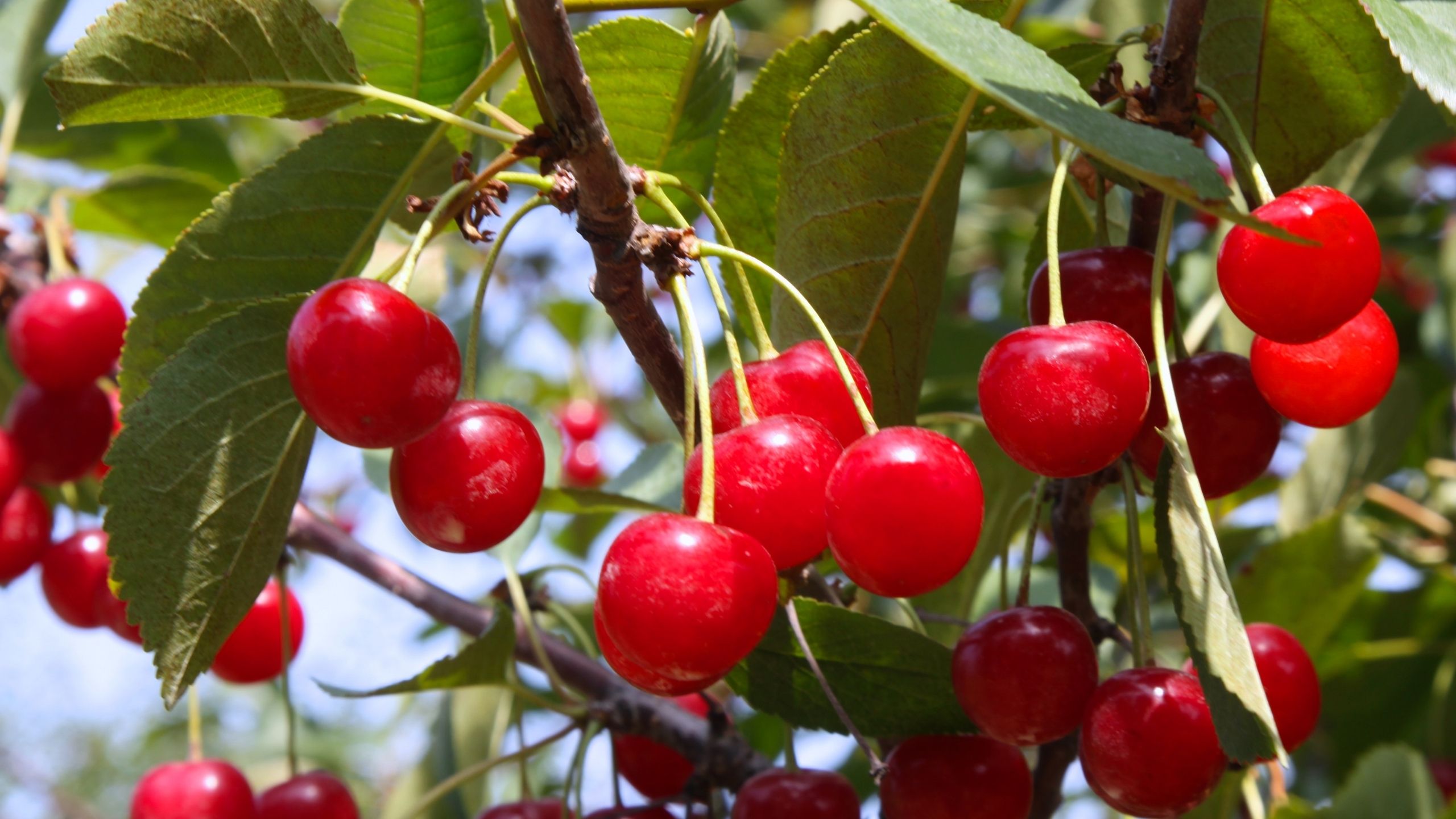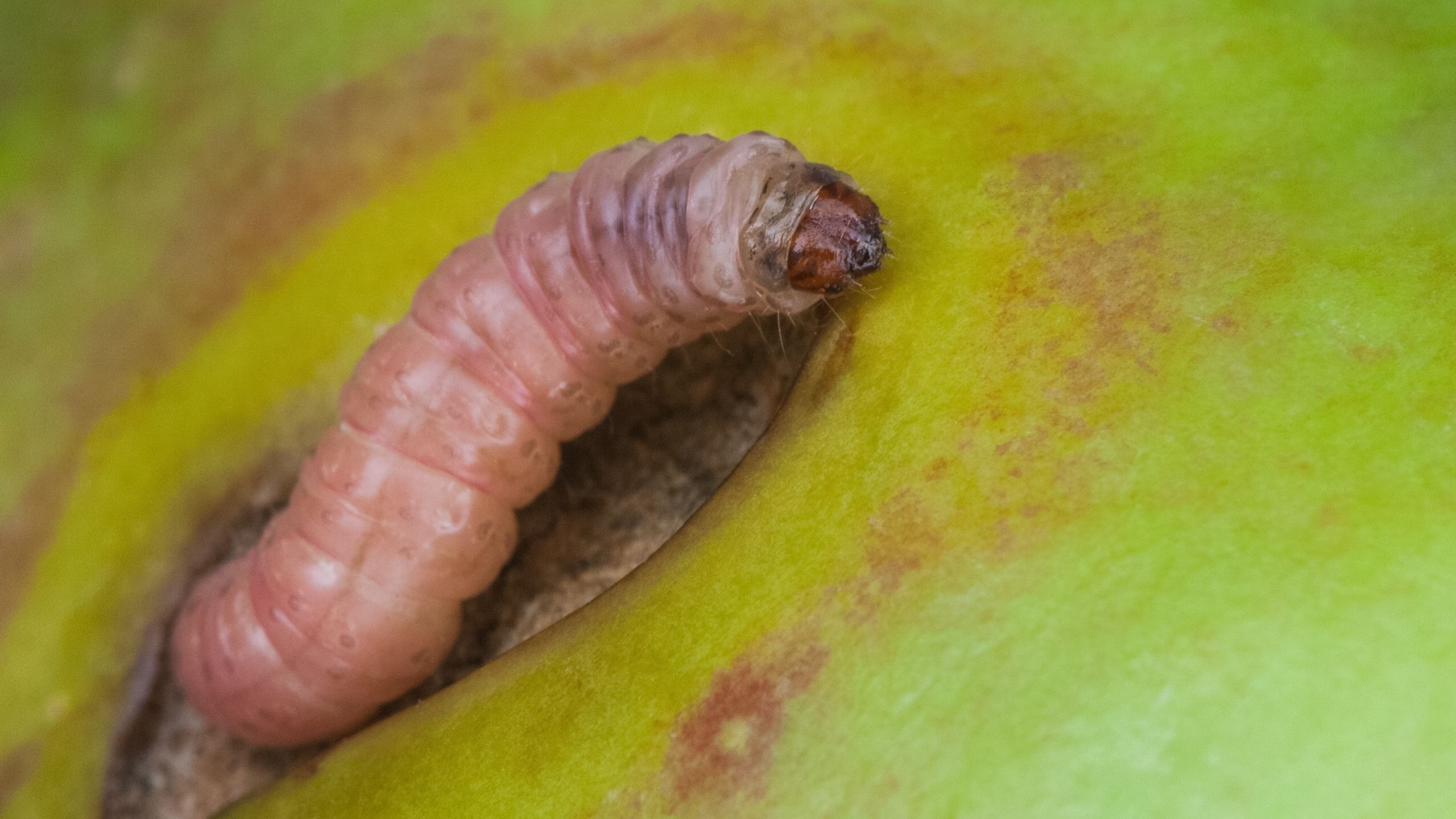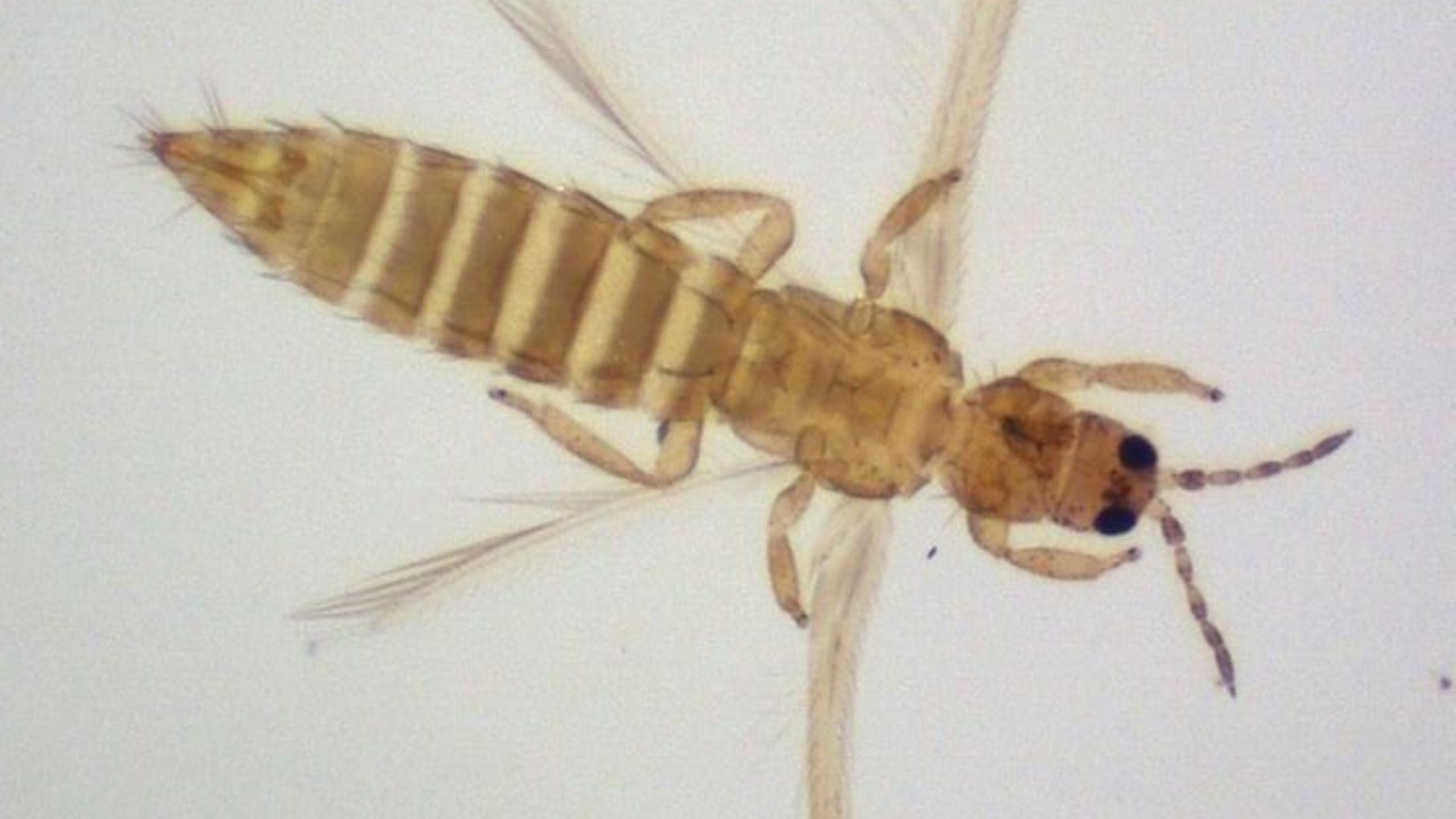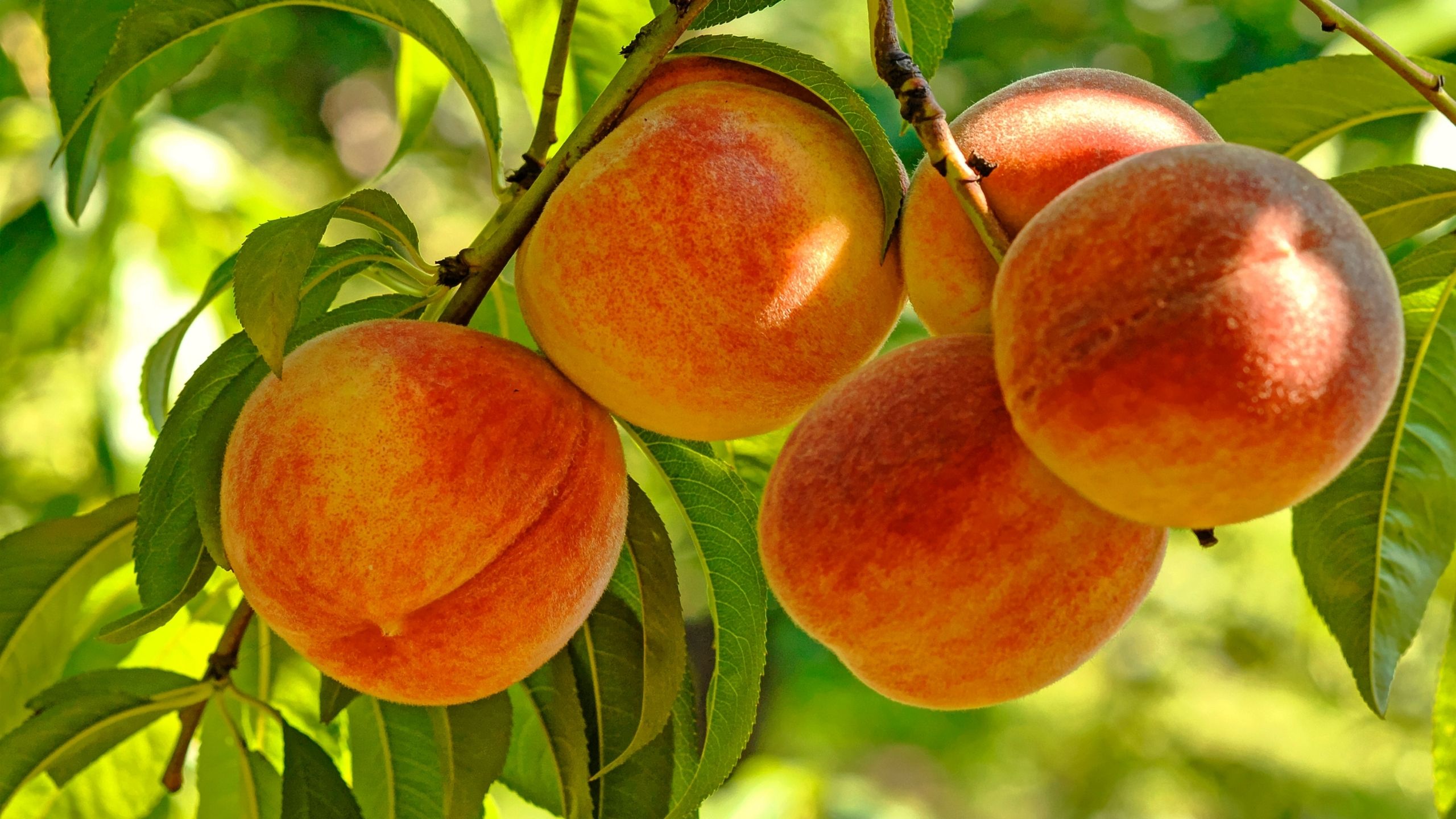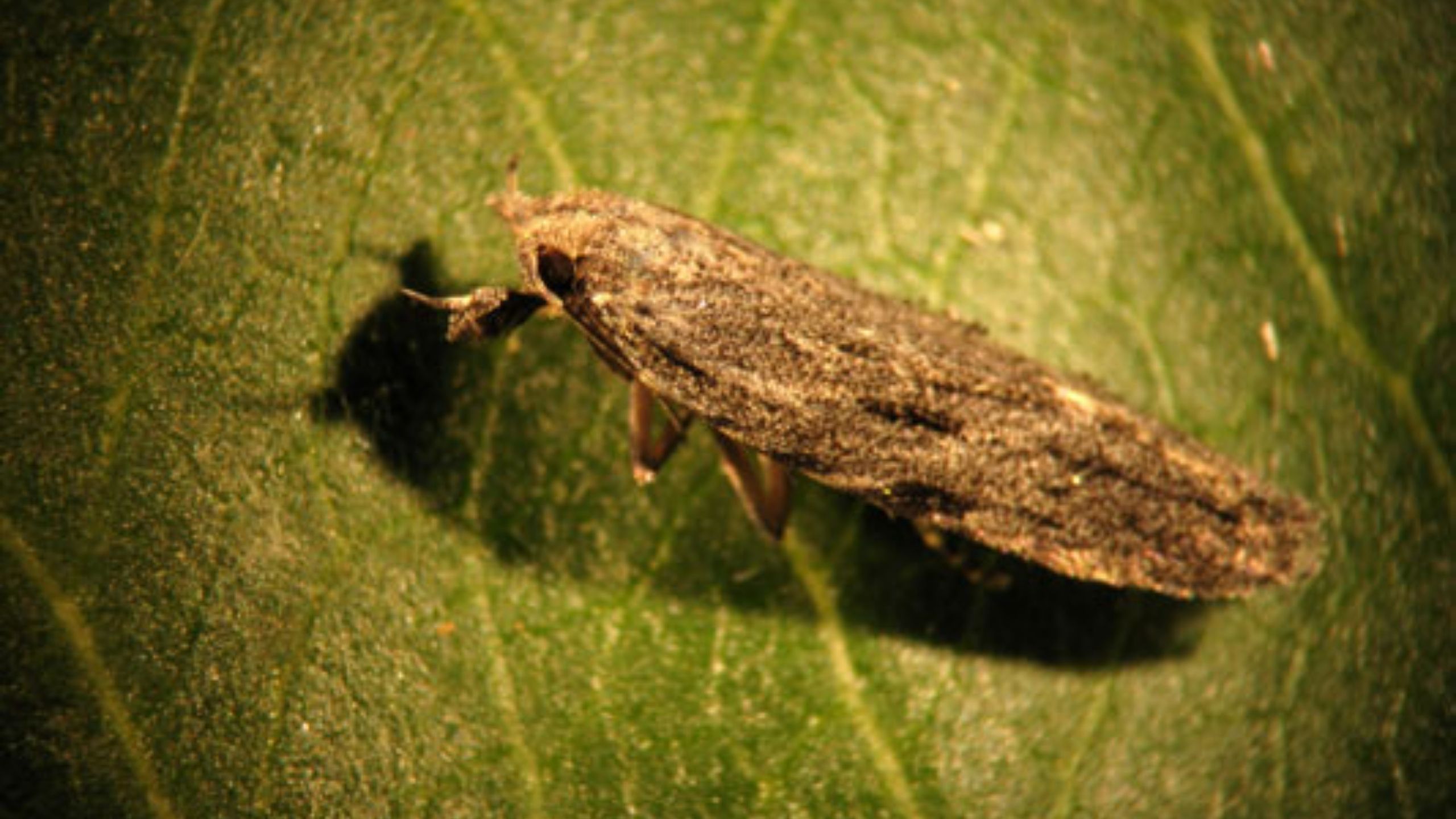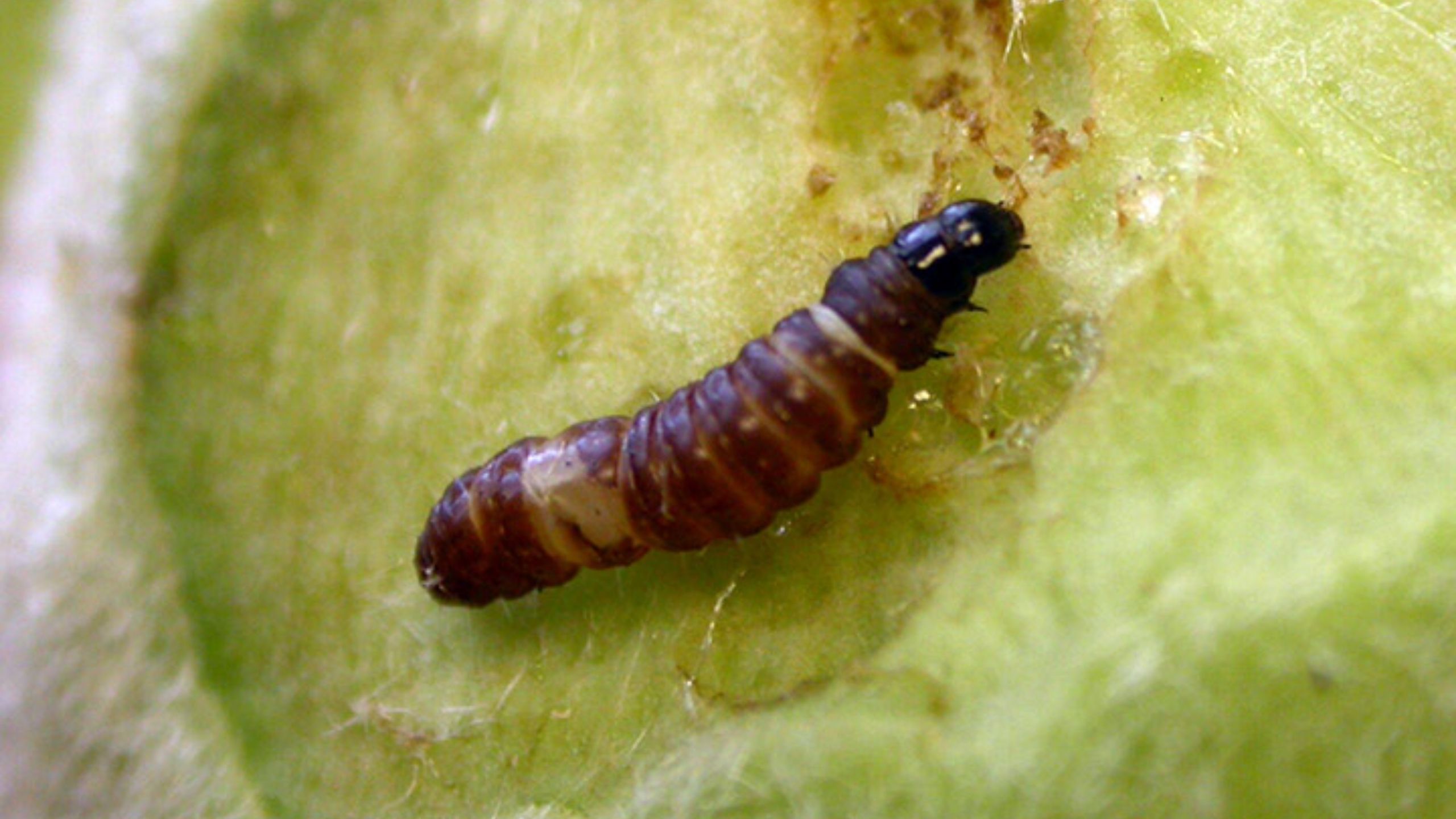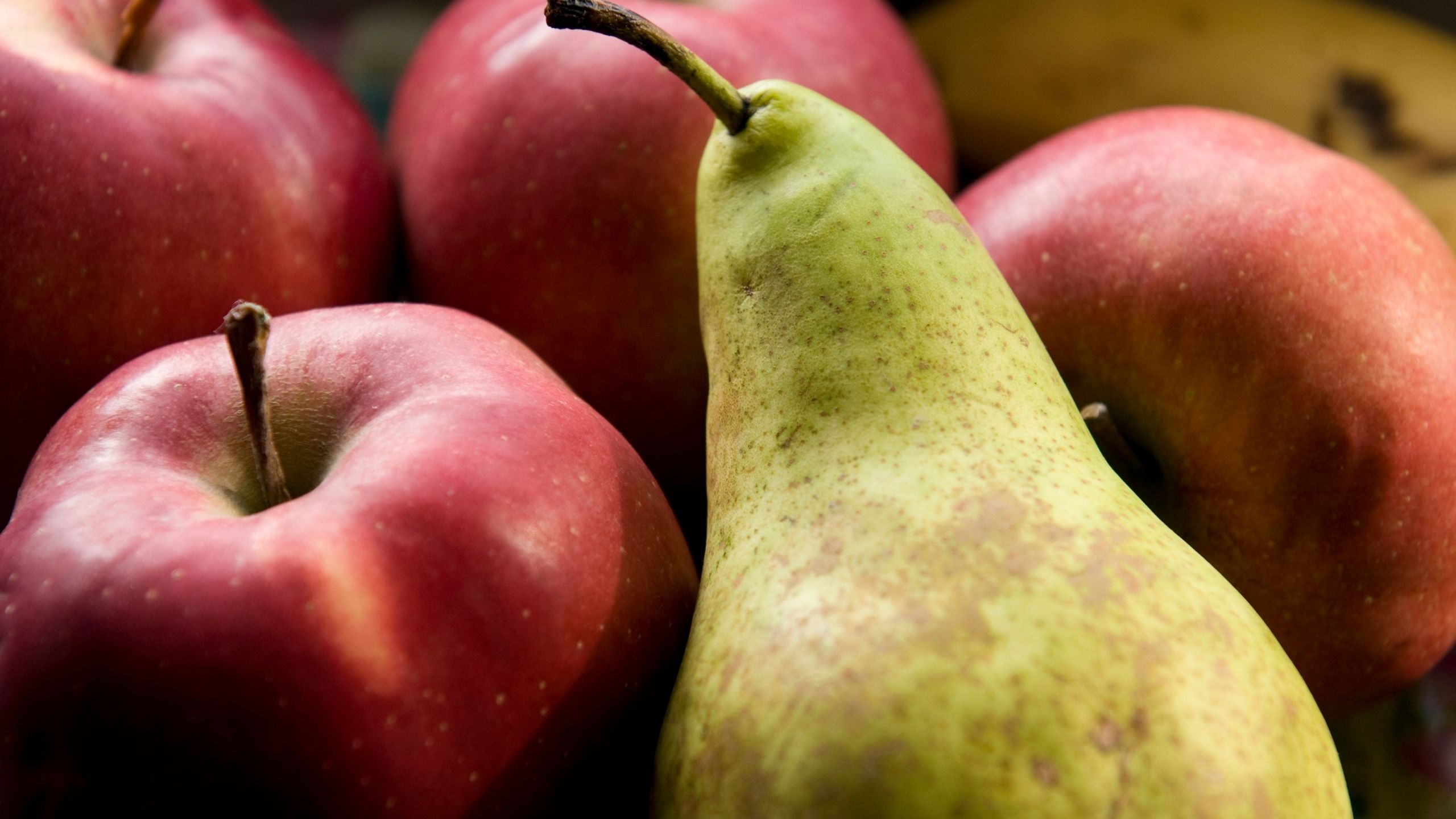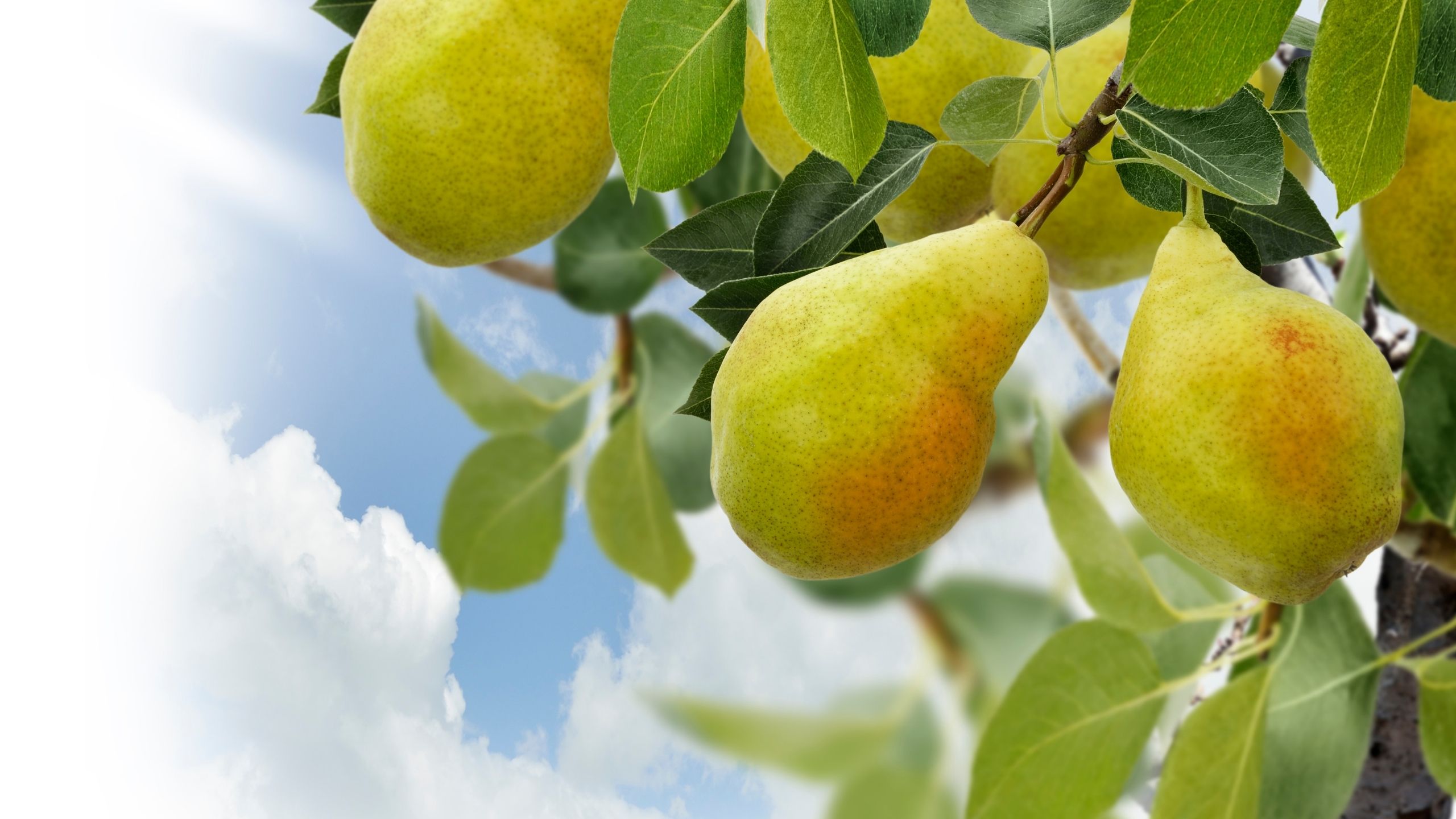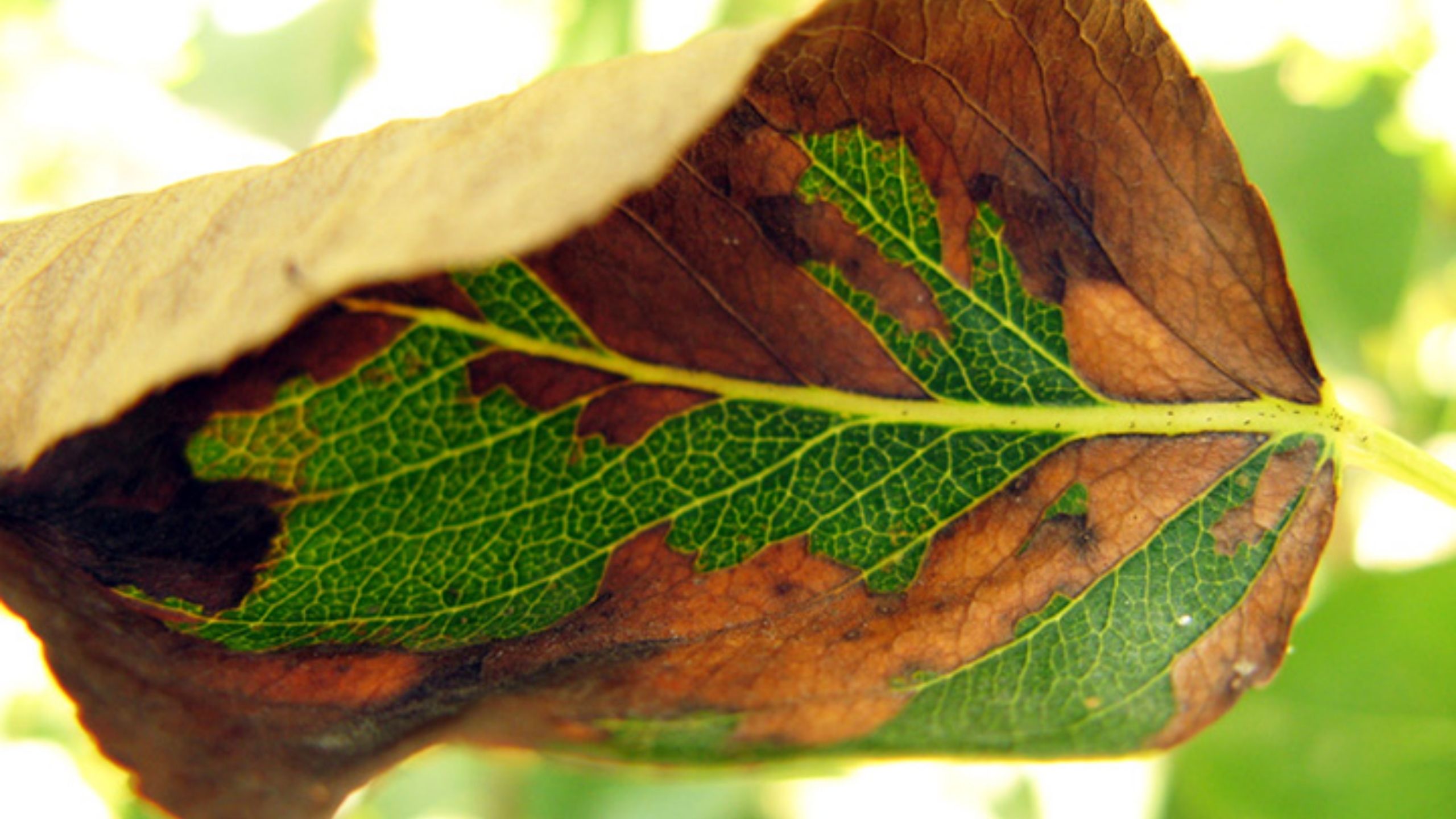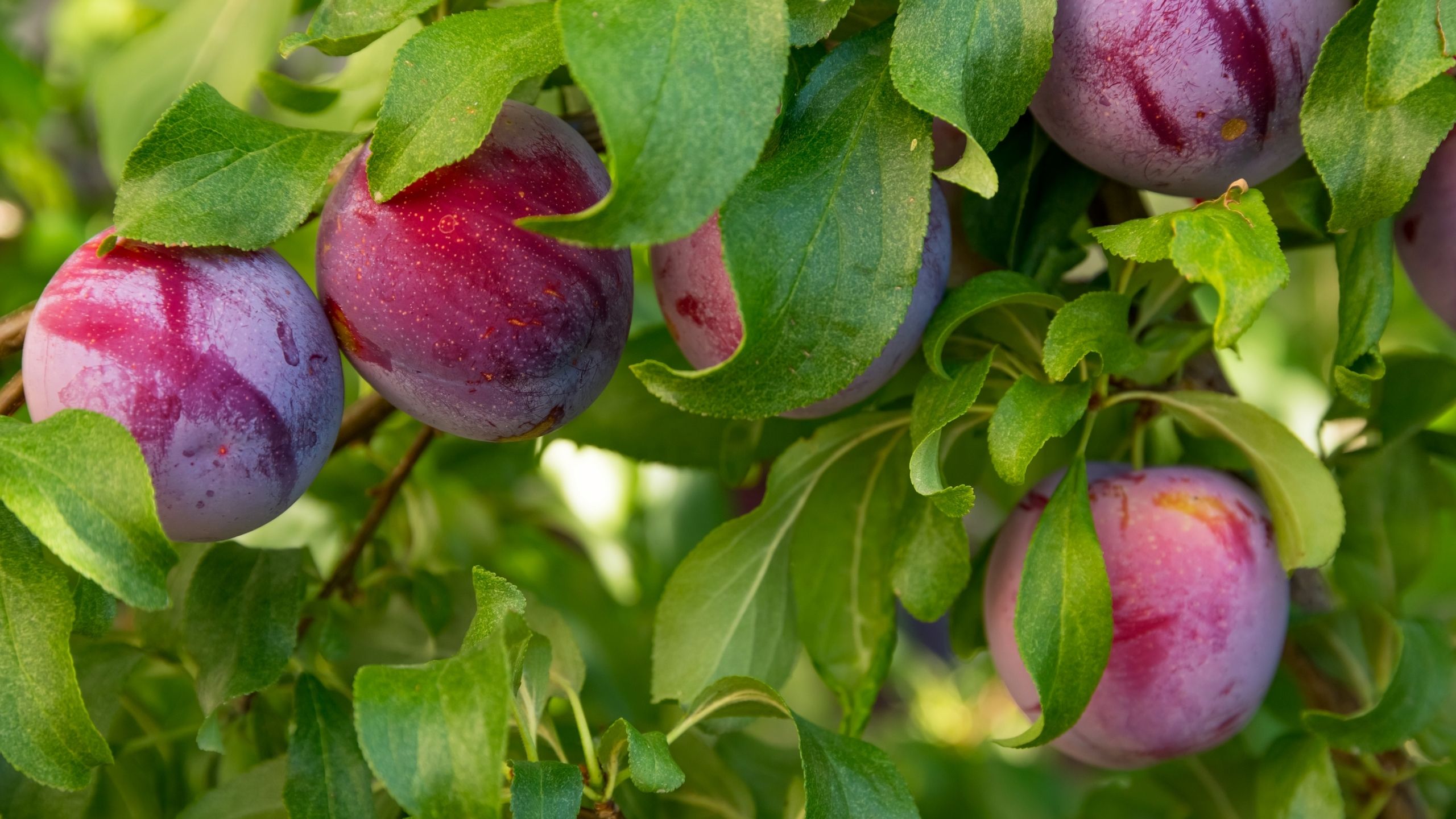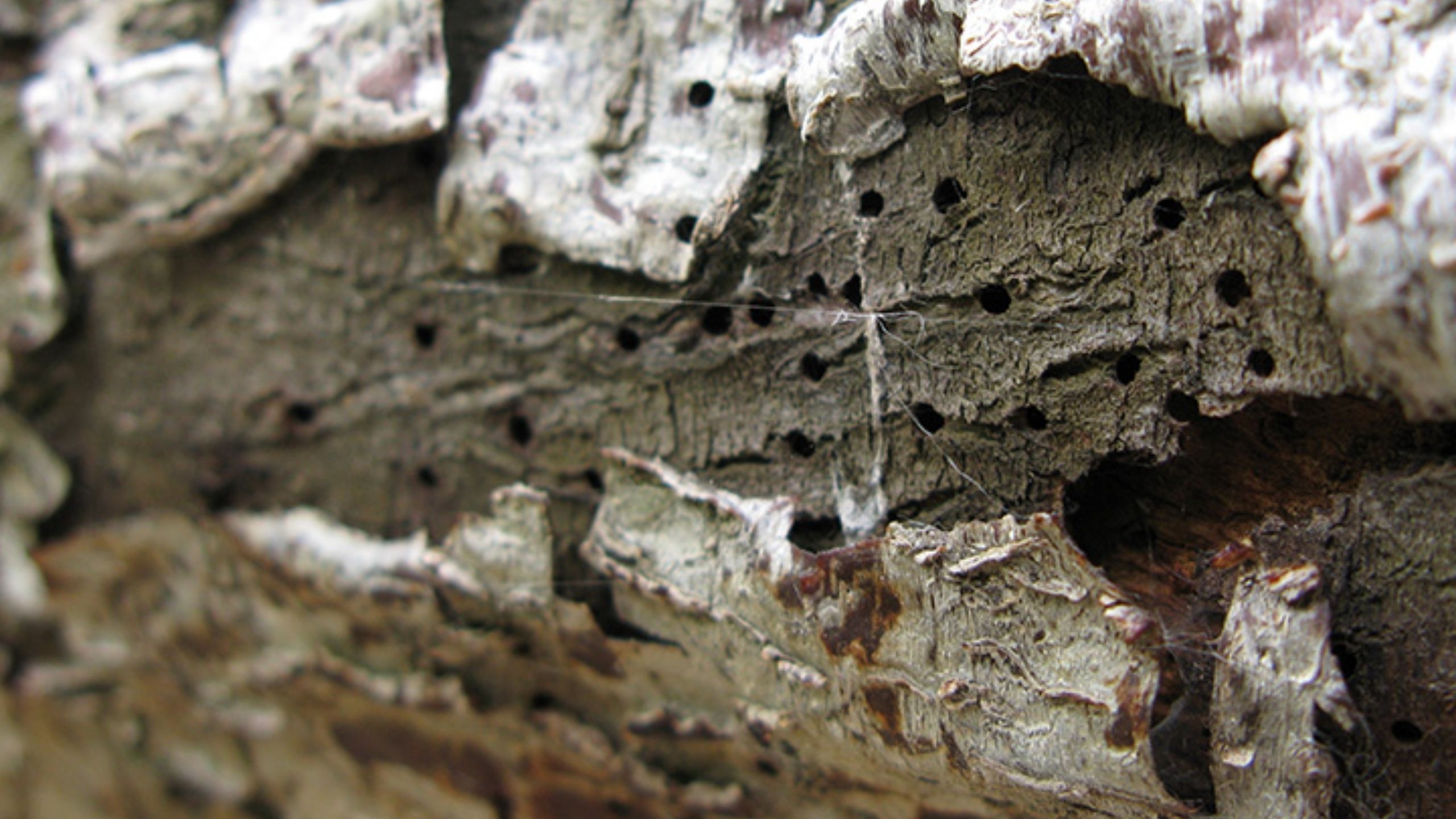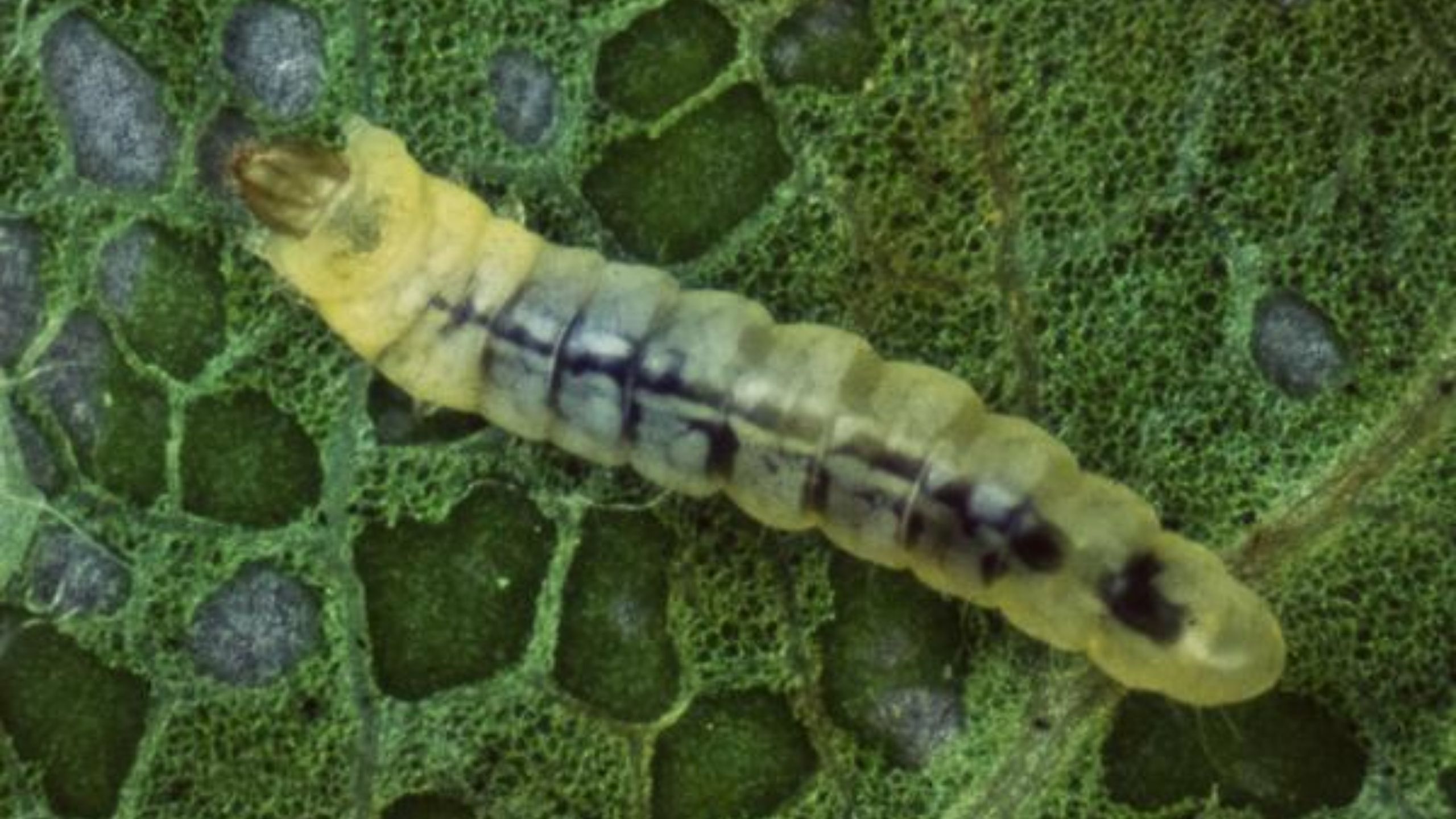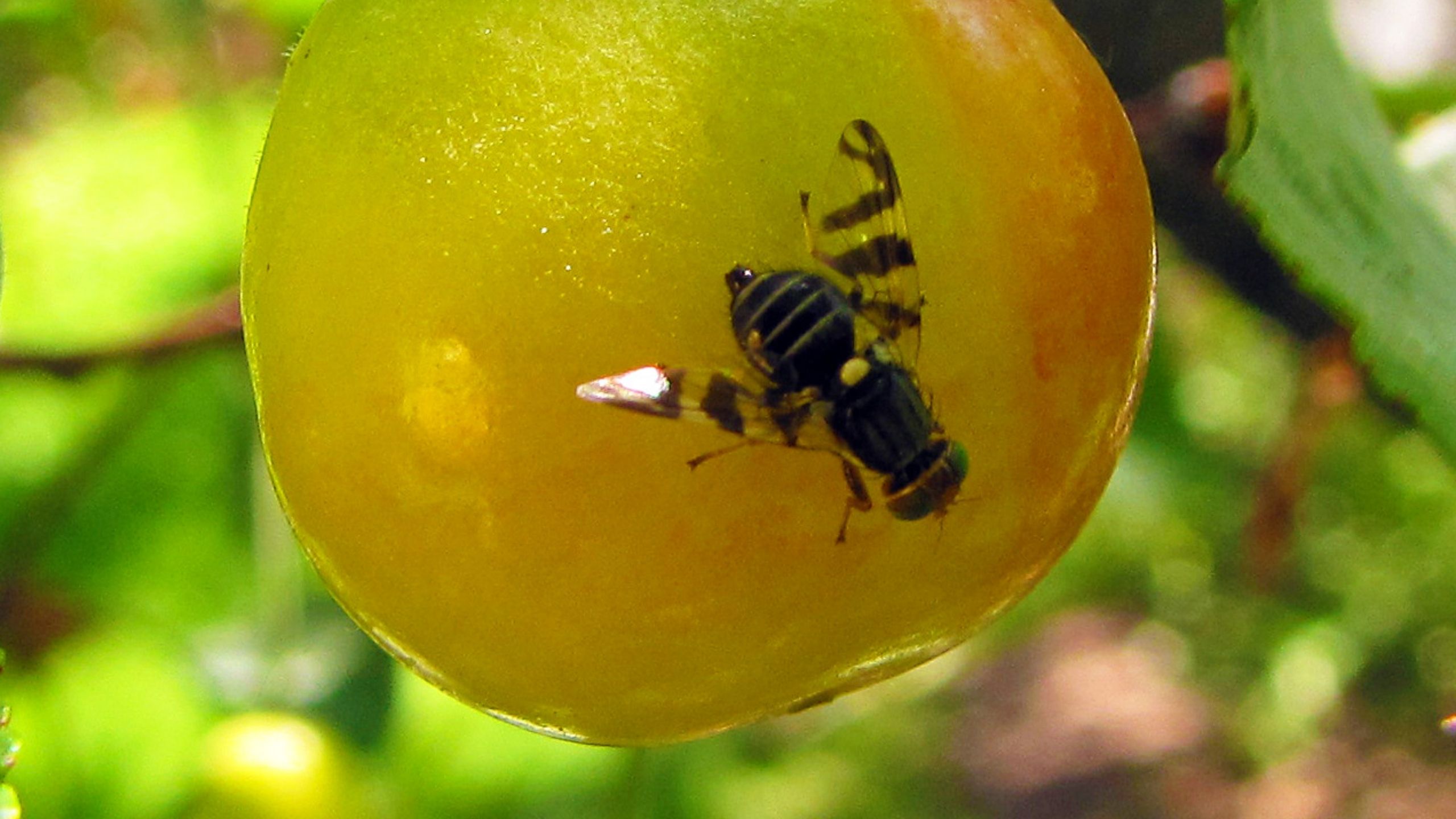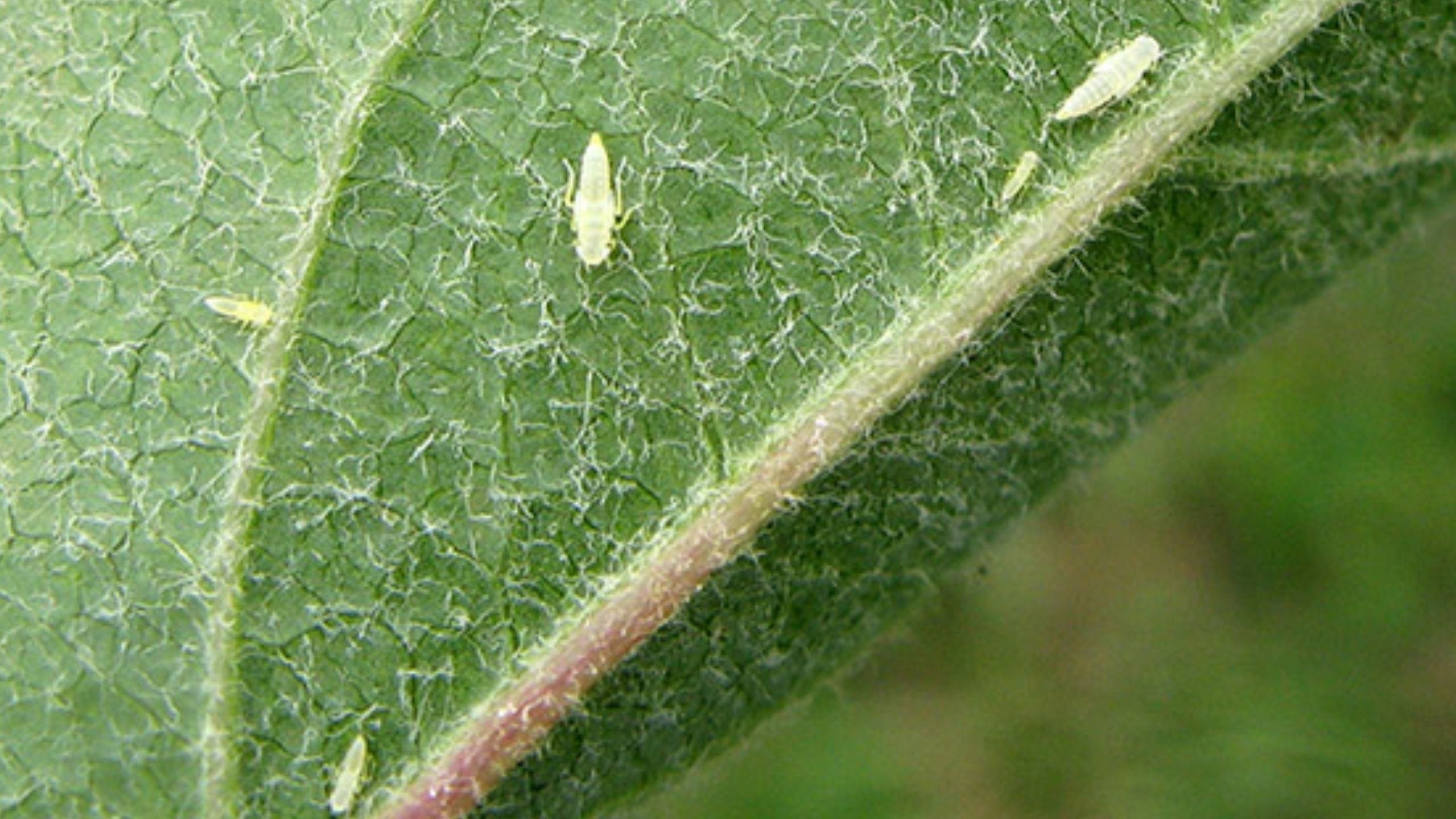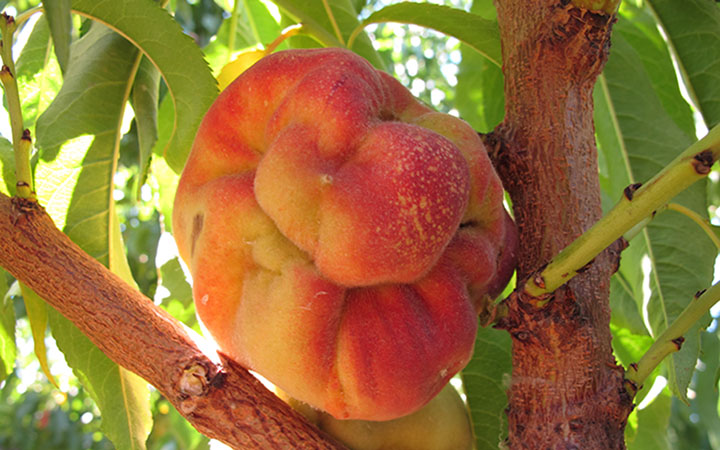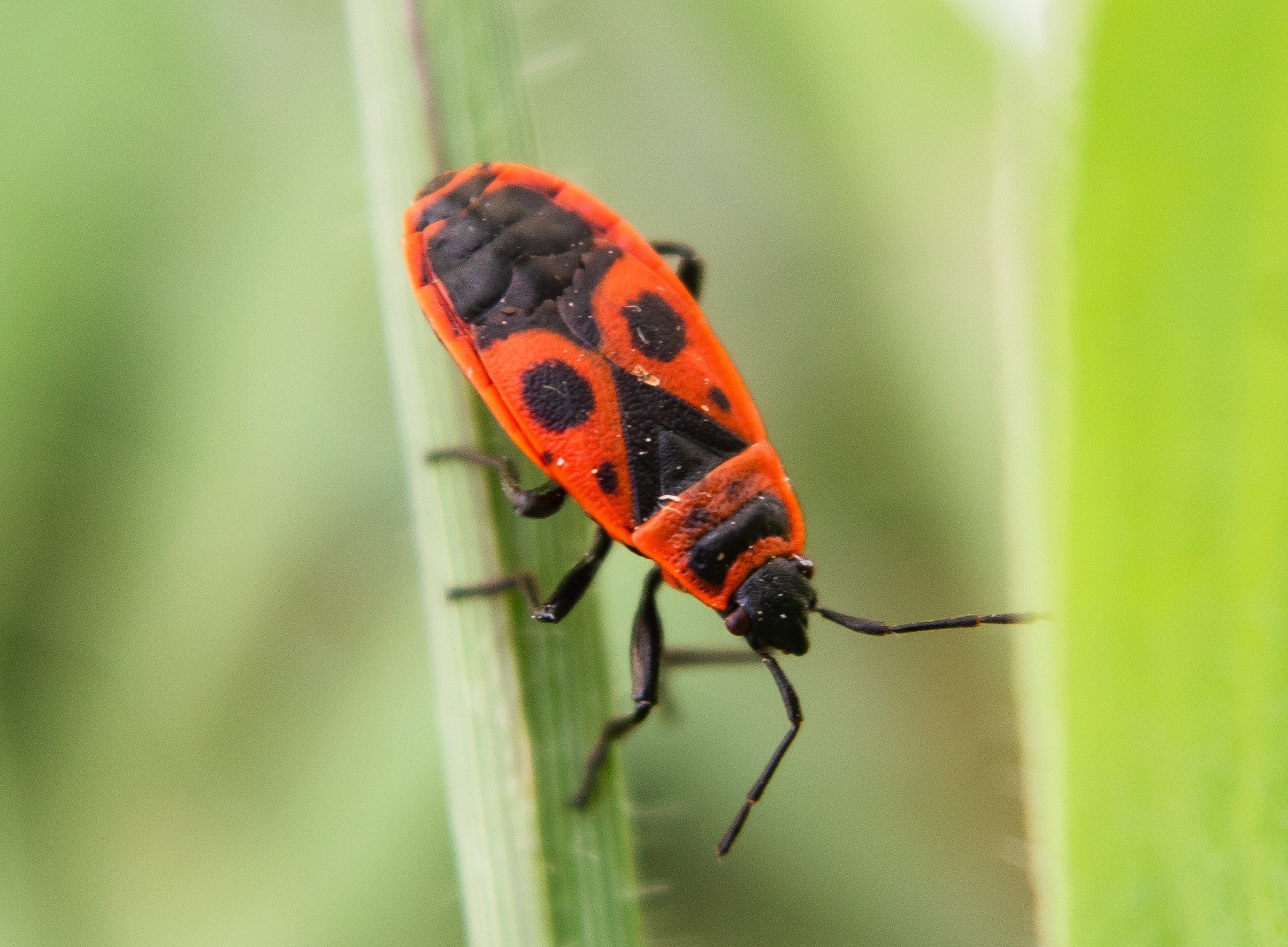Pear Sawfly
September 2011
Vincent P. Jones, Extension Specialist • Ryan S. Davis, Arthropod Diagnostician (No longer at USU)
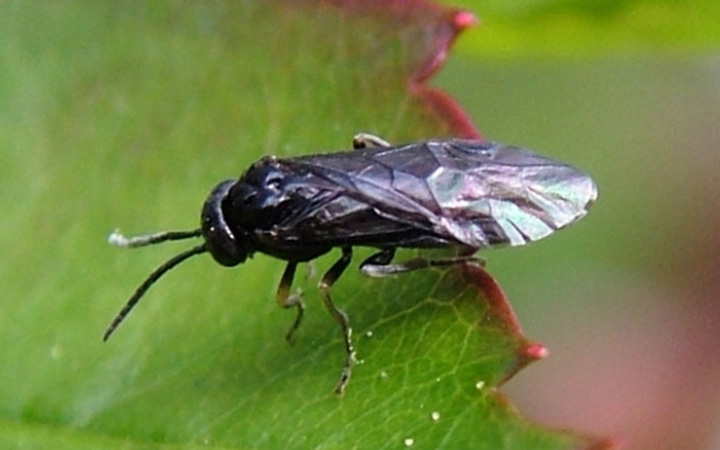
Fig. 1. Adult pear sawfly wasp. Image courtesy of Cheryl Moorehead, Bugwood.org.
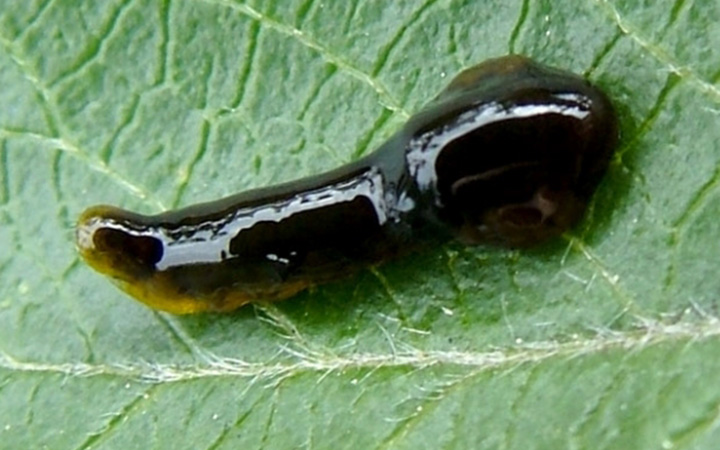
Fig. 2. Young pear sawfly larvae covered in dark, gelatinous secretion. Image courtesy of Cheryl Moorehead, Bugwood.org.
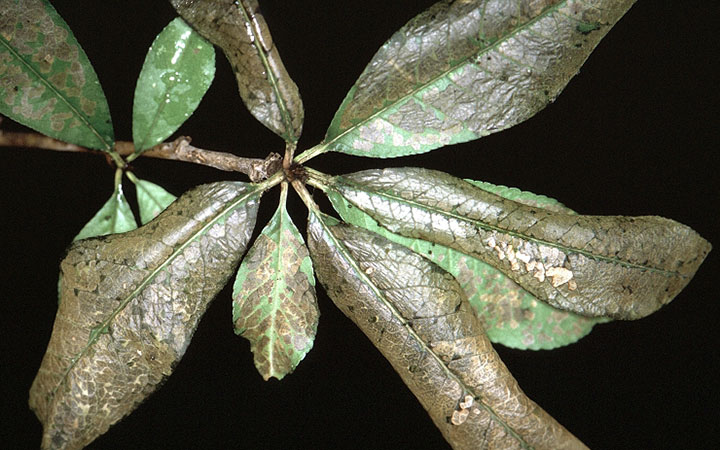
Fig. 3. Feeding damage caused by pear sawfly (Caliroa cerasei) larvae-notice the skeletonizing pattern of the damage. Image courtesy of Jerry A. Payne, USDA ARS, Bugwood.org.
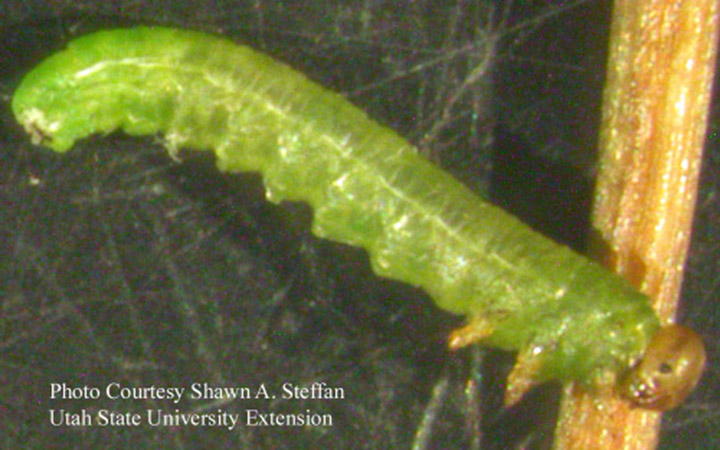
Fig. 4. Late-stage immature pear sawfly. Image courtesy of Shawn A. Steffan, Utah State University Extension.
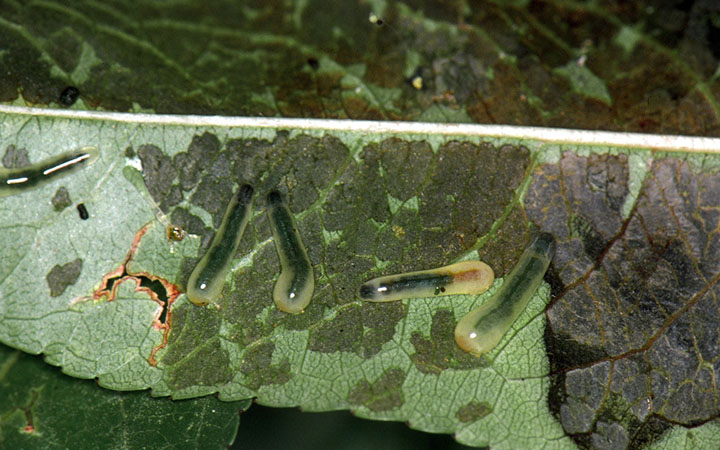
Fig. 5. Pear sawfly larvae feeding gregariously on a leaf-notice the skeletonizing pattern of the damage. Image courtesy of Jerry A. Payne, USDA ARS, Bugwood.org.
Quick Facts
- Pear sawfly hosts include pear, cherry, hawthorn, plum, buttonbrush, Juneberry, mountain ash, cotoneaster, and quince.
- There are 2 generations of pear sawfly each year; second generation larvae cause the majority of the damage.
- Damage from pear sawfly feeding rarely warrants control.
- If control is needed, hand removal or spraying with a strong stream of water can be effective.
- Low toxicity chemical controls include insecticidal soap and products containing spinosad A&B.
Introduction
The pear sawfly, which is actually a wasp, is a common pest on pear, cherry, and hawthorn in Utah. The slug-like appearance of the larval stage has prompted this insect to also be referred to as the pear or cherry slug in various parts of the country. Although cherry and pear are the preferred hosts, the pear sawfly will also attack plum, buttonbrush, Juneberry, mountain ash, cotoneaster and quince. On fruit trees which are treated for other pests, the pear sawfly is rarely a problem, but in untreated situations the entire tree may be defoliated.
General Biology
Scientific Name: Caliroa cerasi.
Range: North Atlantic states to California; Canada, Europe.
Hosts: Cherry and pear are primary hosts; secondary hosts include plum, buttonbrush, Juneberry, mountain ash, cotoneaster, and quince.
Identification of Adult: The adults have four wings, are black-and-yellow and slightly larger than a common house fly (Fig. 1).
Identification of Immature: The early instar (a developmental stage) larvae are grey-green, lack distinct legs and are wide at the front end of the body. They secrete a slime which completely covers the earlier instars, resulting in a slug-like appearance (Fig. 2). The last instar larvae is green-orange, caterpillar-like, and has distinct legs (Fig. 4).
Life History: The first generation appears in May when the adults emerge from cocoons that have overwintered in the soil. After emergence, adults mate and insert their eggs under the epidermis of a leaf where the eggs hatch 1-2 weeks later. The newly hatched larvae move to the top of leaves to feed on leaf epidermis between veins. Last instar larvae pupate and adults emerge August through September. The second generation is generally the more damaging stage because of the higher populations that commonly occur later in the season.
Key Habits: The primary damage is caused by the feeding of the larval stage. The larvae feed on the upper leaf surface between veins and can completely skeletonize leaves (Figs. 3 & 5). When large populations are present, virtually every leaf on the tree may appear to be dead because of larval feeding. In most cases damage usually does not cause serious stress to the tree, but may be unsightly.
Control
Non-Chemical Control
As mentioned previously, the pear sawfly is rarely a problem if any pesticides are used for control of other insects. In certain circumstances, however, the pear sawfly can reach damaging population levels. Because the larvae are extremely susceptible to dessication, several references indicate that road dust, wood ashes or dirt thrown on the tree is enough to control this insect. Removing larvae from leaves by hand and placing them in a bucket containing soapy water, or spraying the foliage with a strong stream of water are also effective strategies.
Chemical Control
Proper spray timing occurs when larvae are visible during either generation. Active ingredients (AI’s) that are effective for control of pear sawfly include (numbers and letters following AI’s indicate their chemical group): carbaryl (1A), esfenvalerate (3A), insecticidal soap (ungrouped), spinosad A&D (5). Some commercial products contain the AI’s cyfluthrin (3A), lambda-cyhalothrin (3A), and spinosad A&B (5). Chemical groups repersent insecticides that have a similar mode of action (MoA). Rotate products from differnet groups every year to minimize insect resistance to insecticides. Make sure the product you select is recommended for your intended application site, e.g., ornamental or fruit trees.


